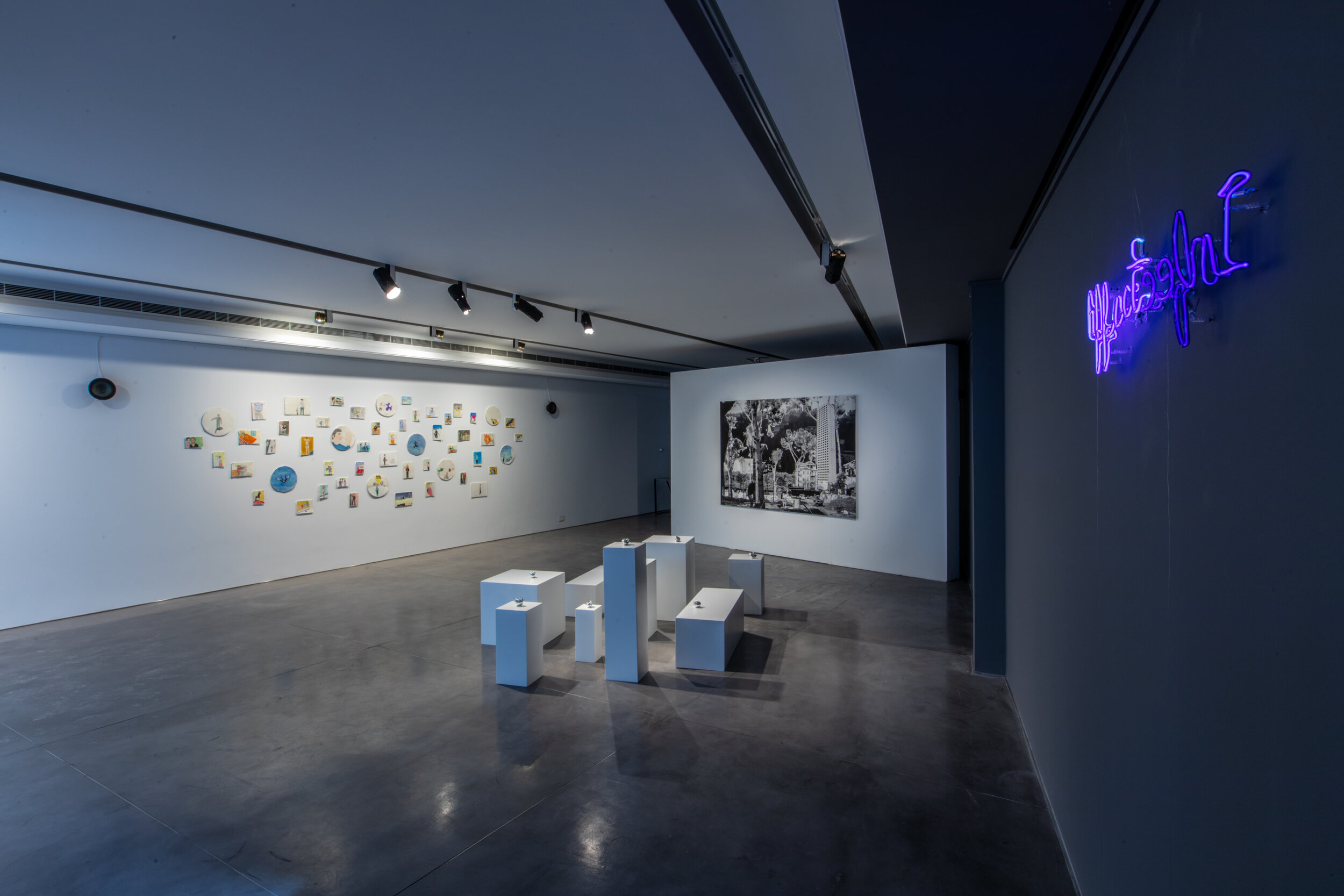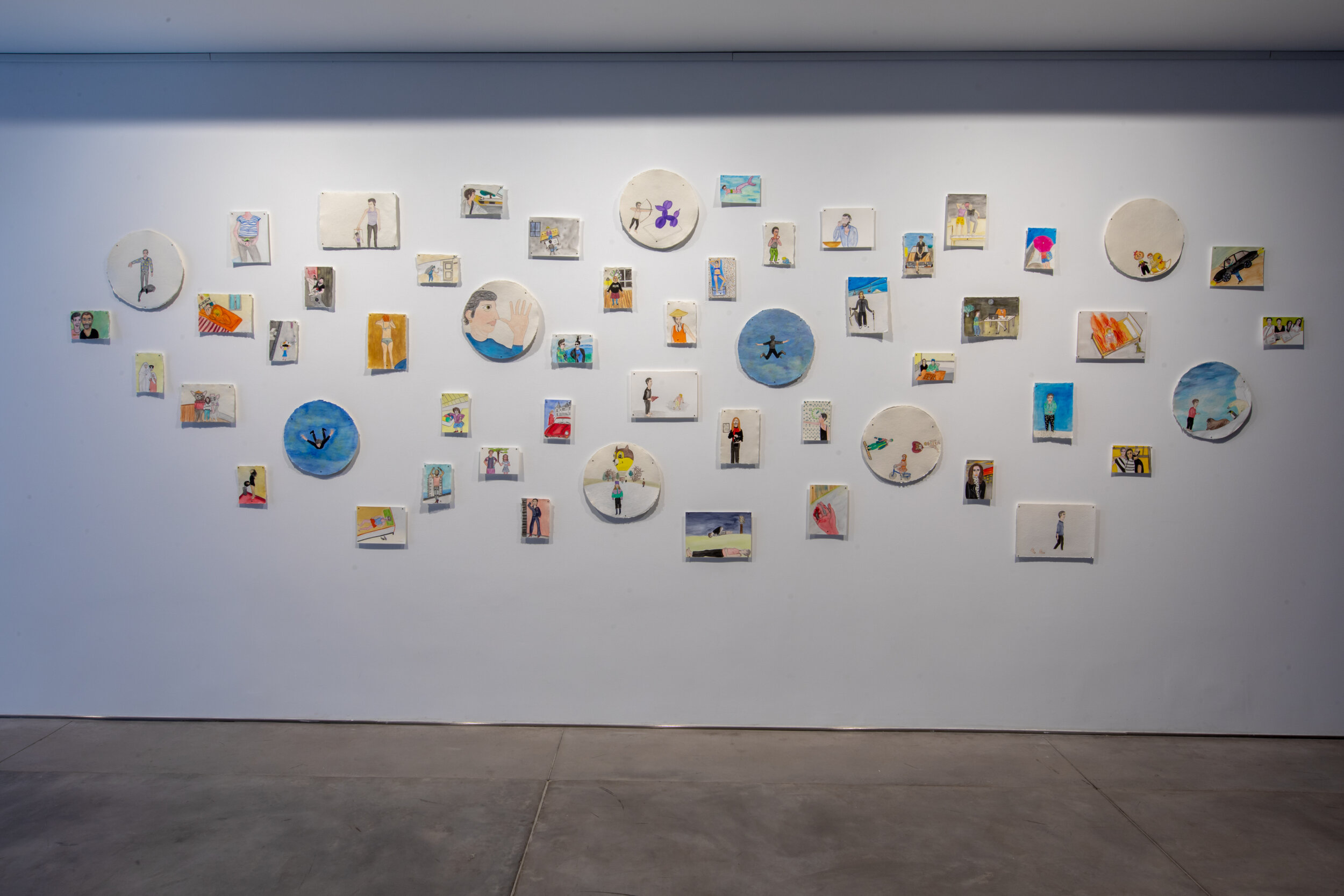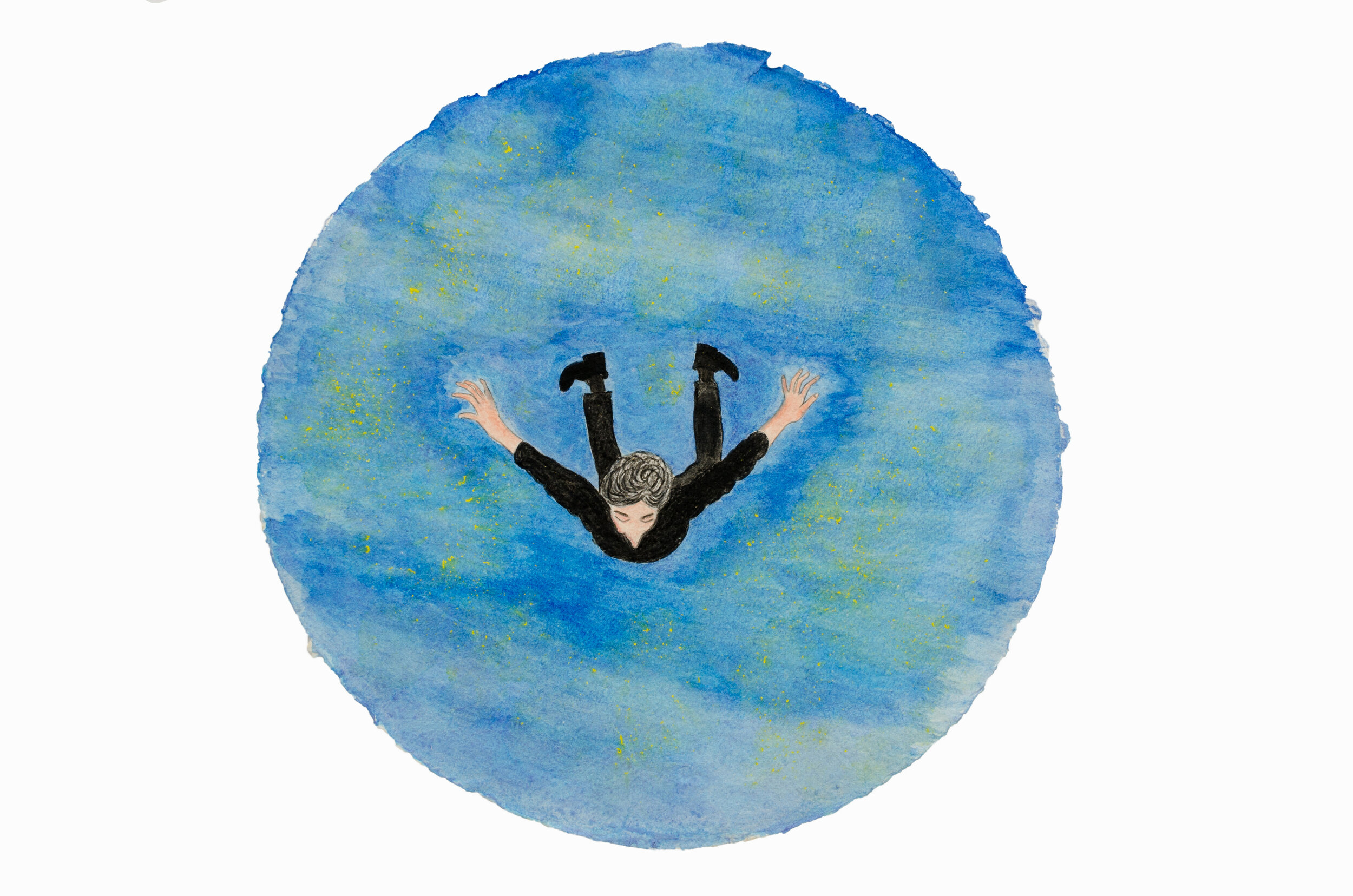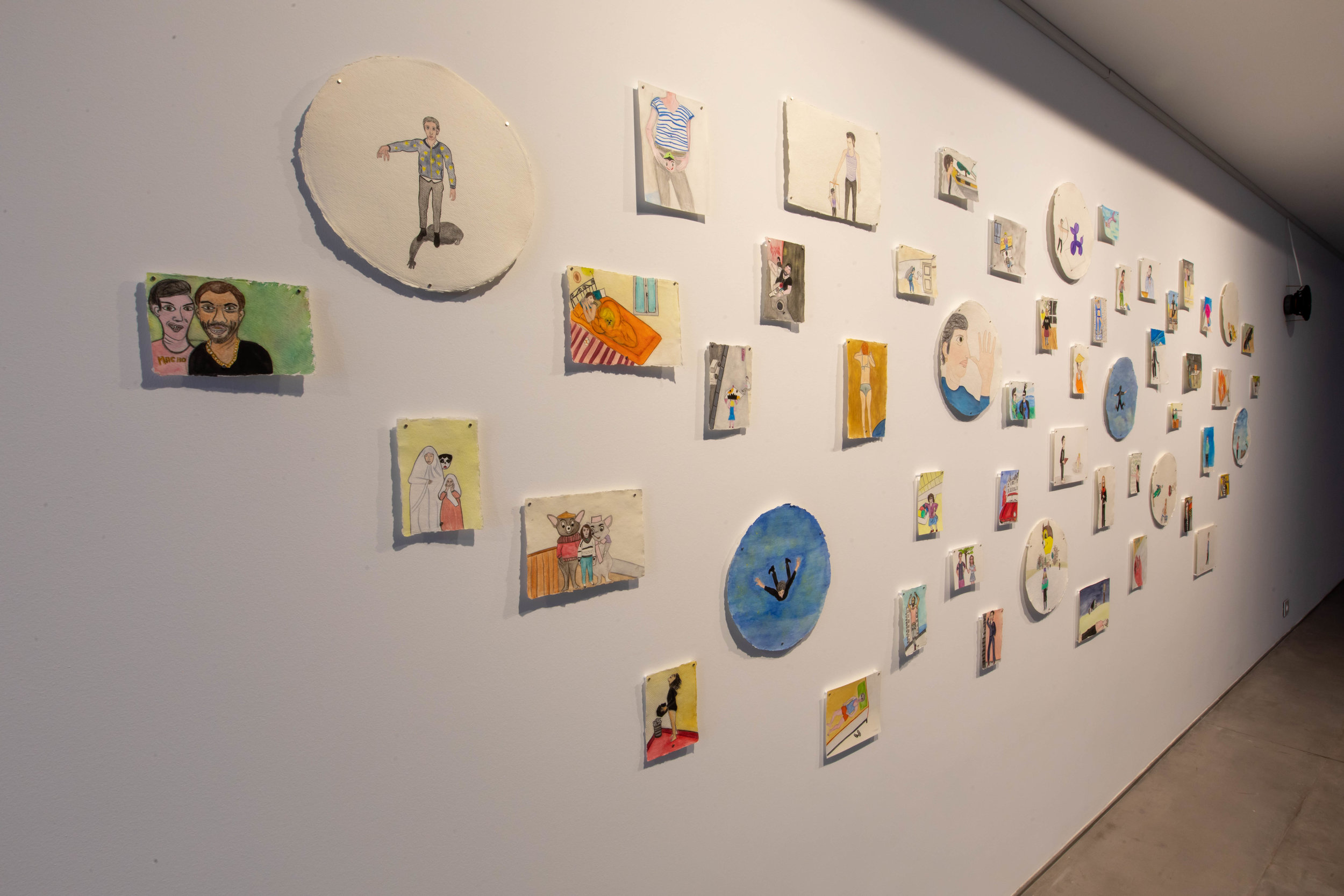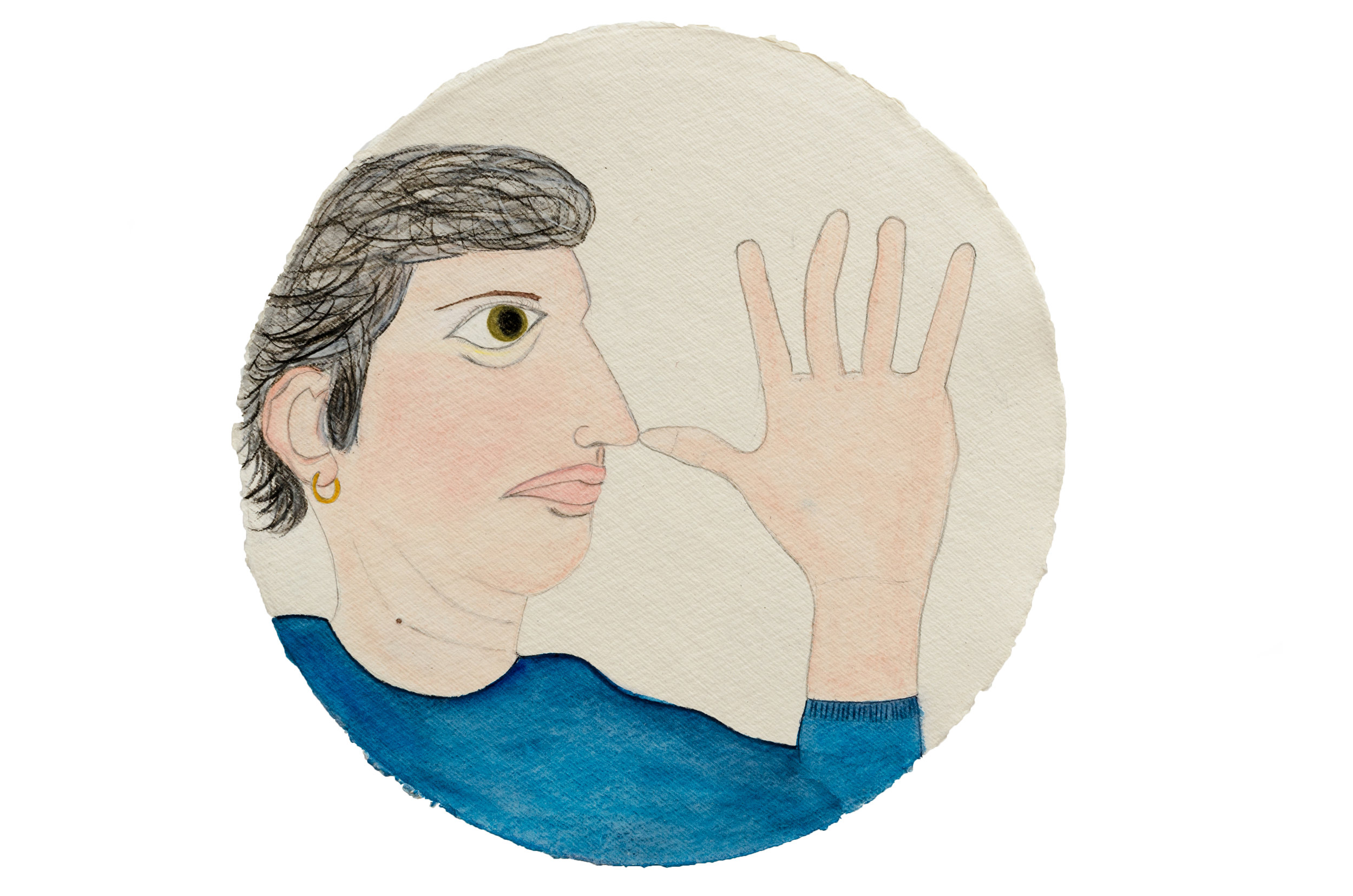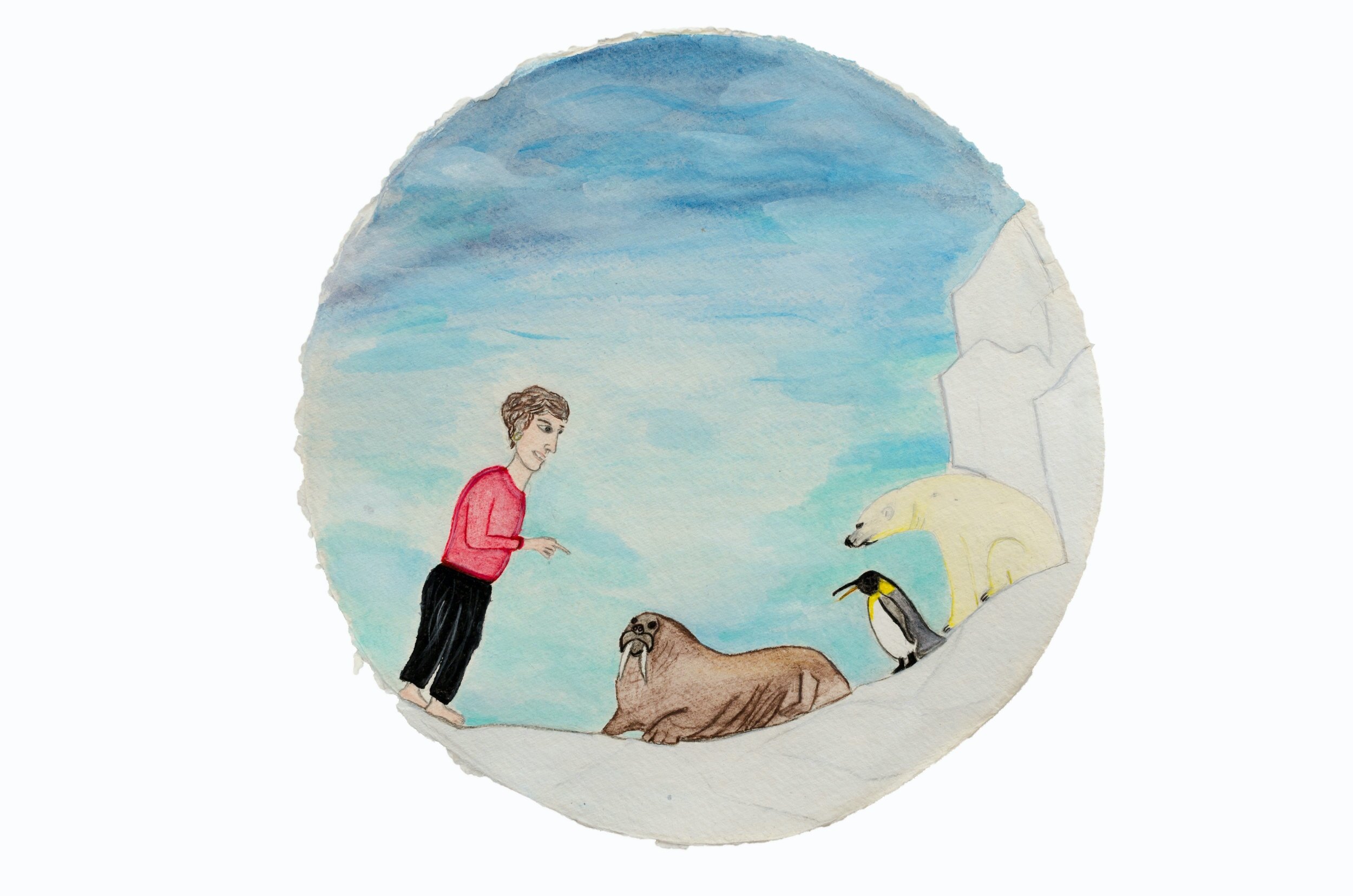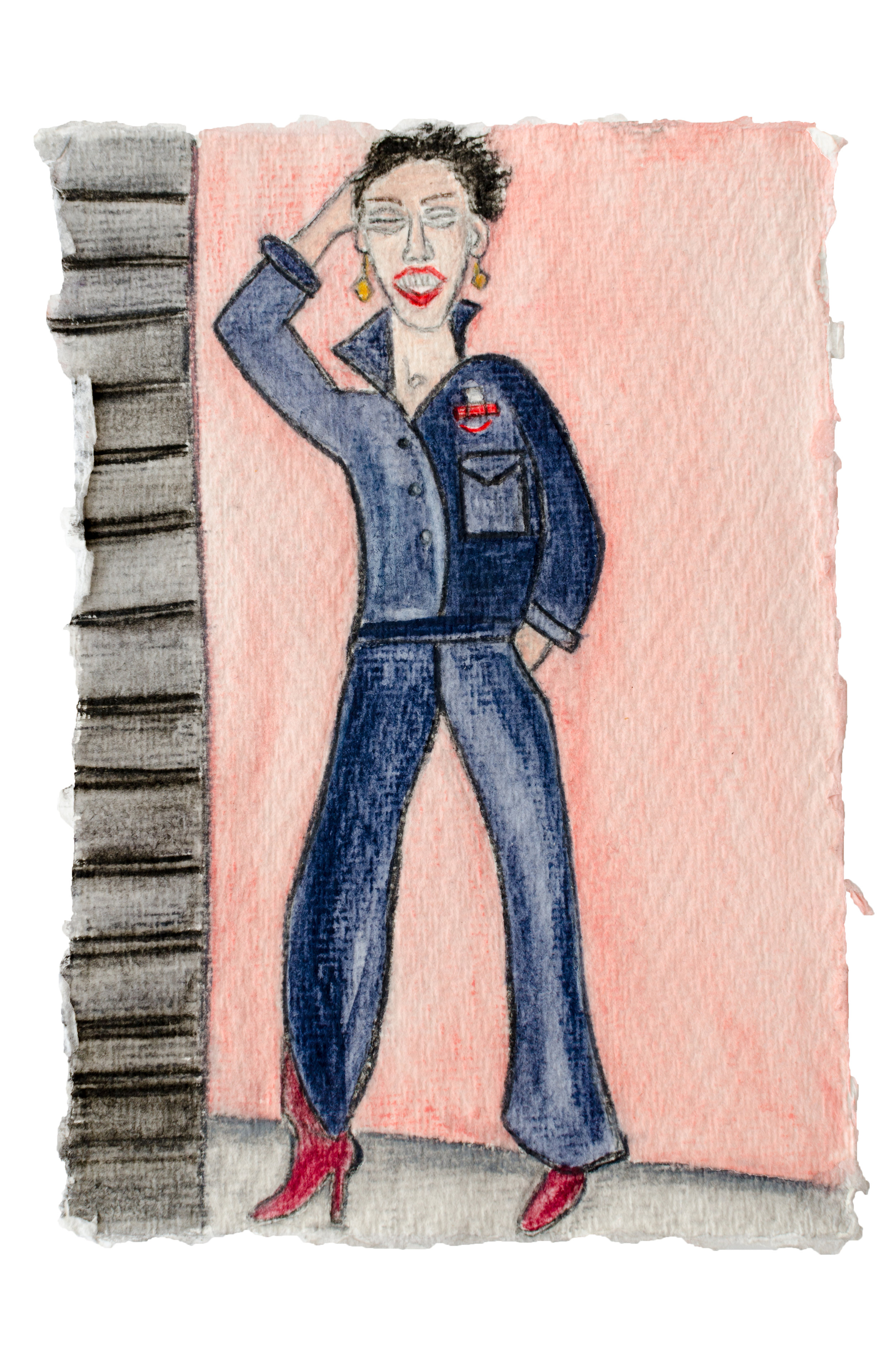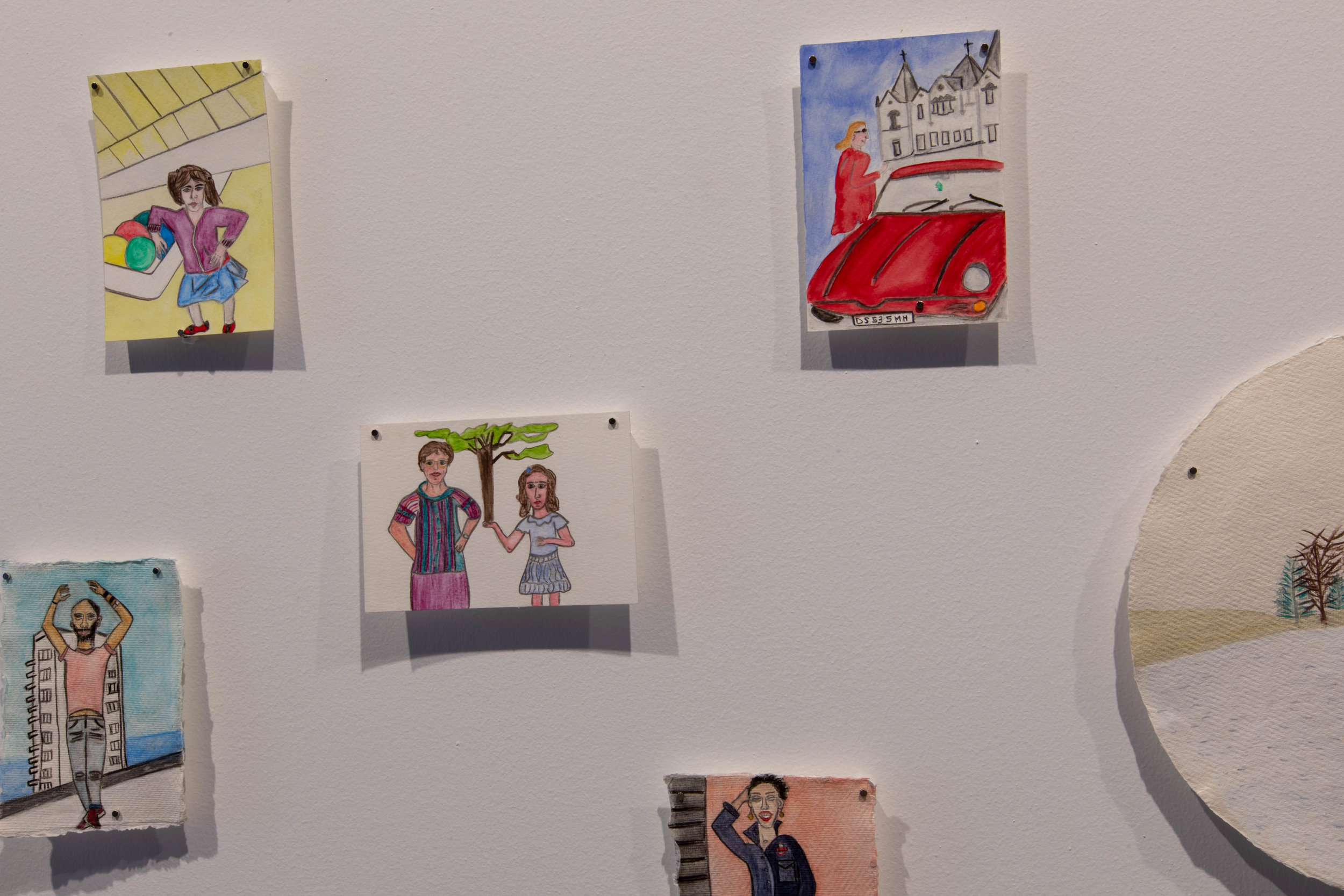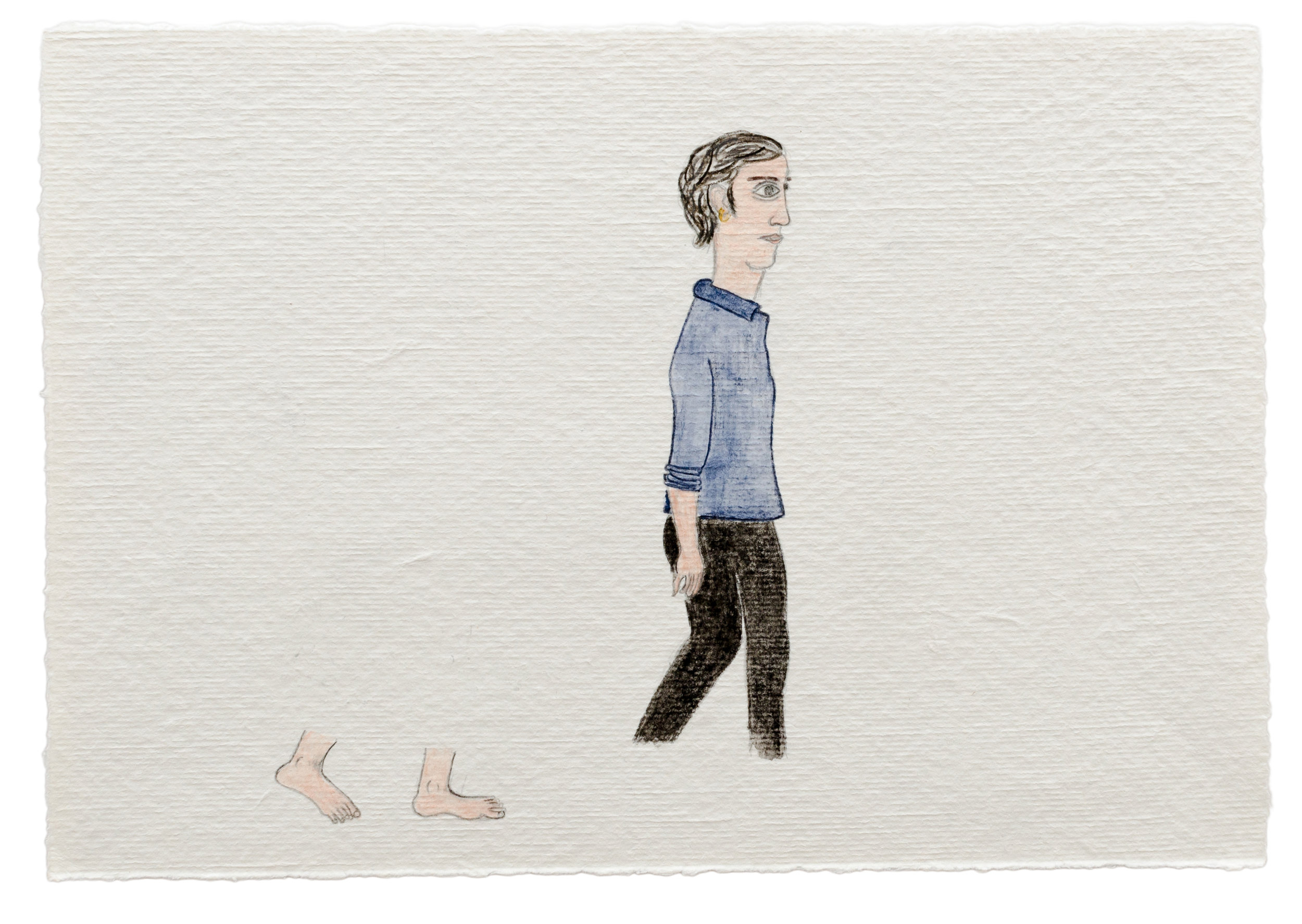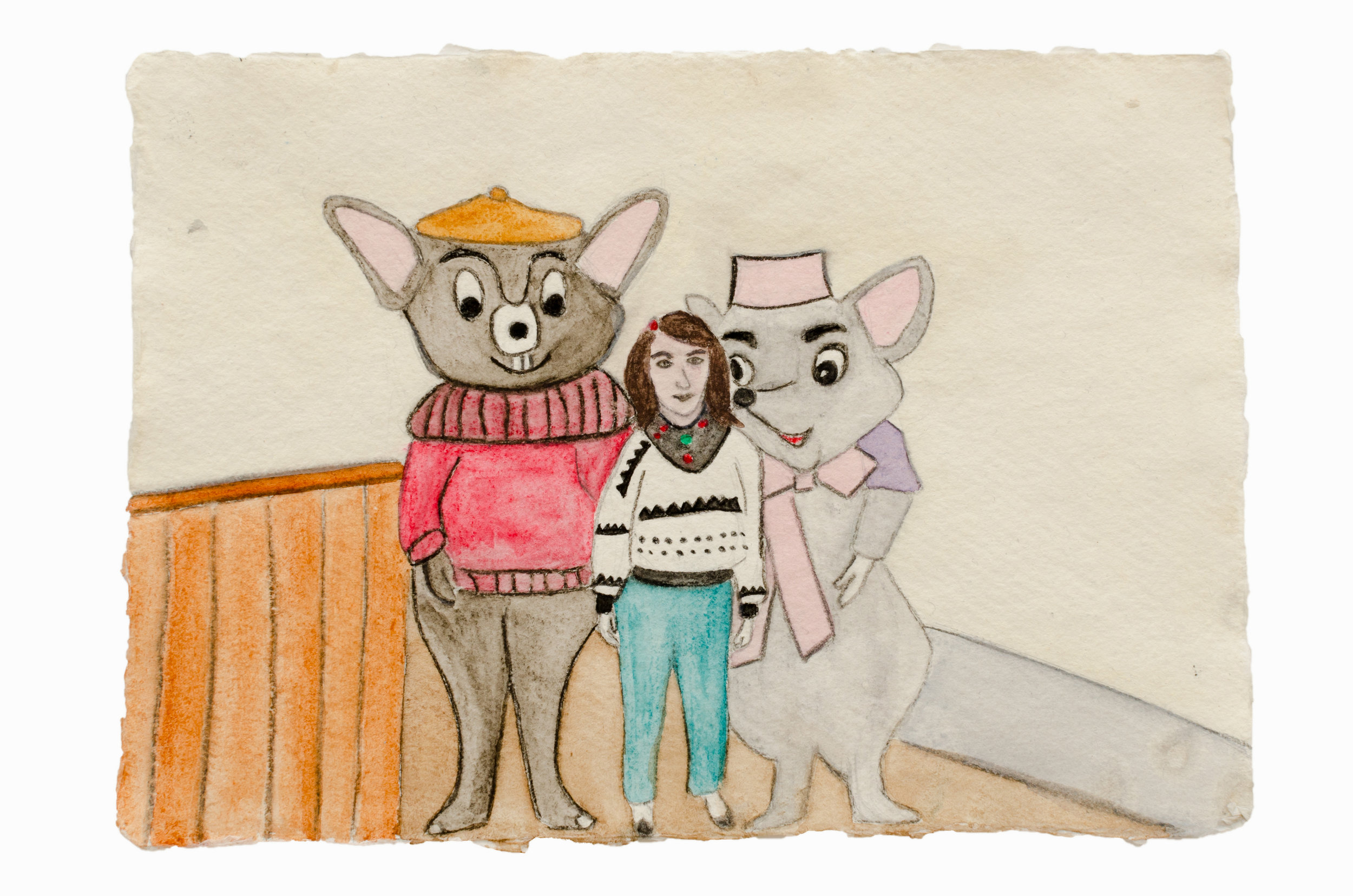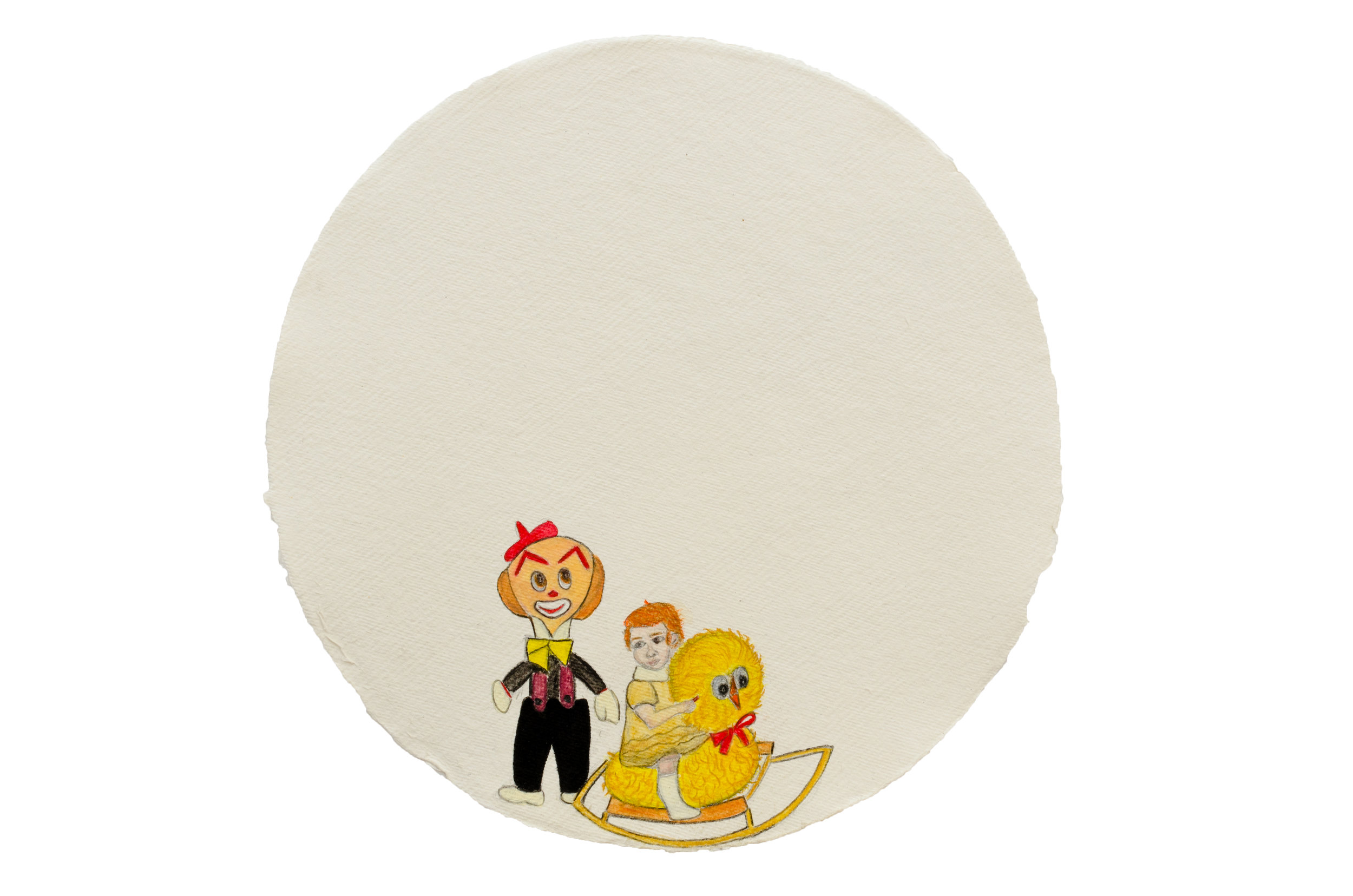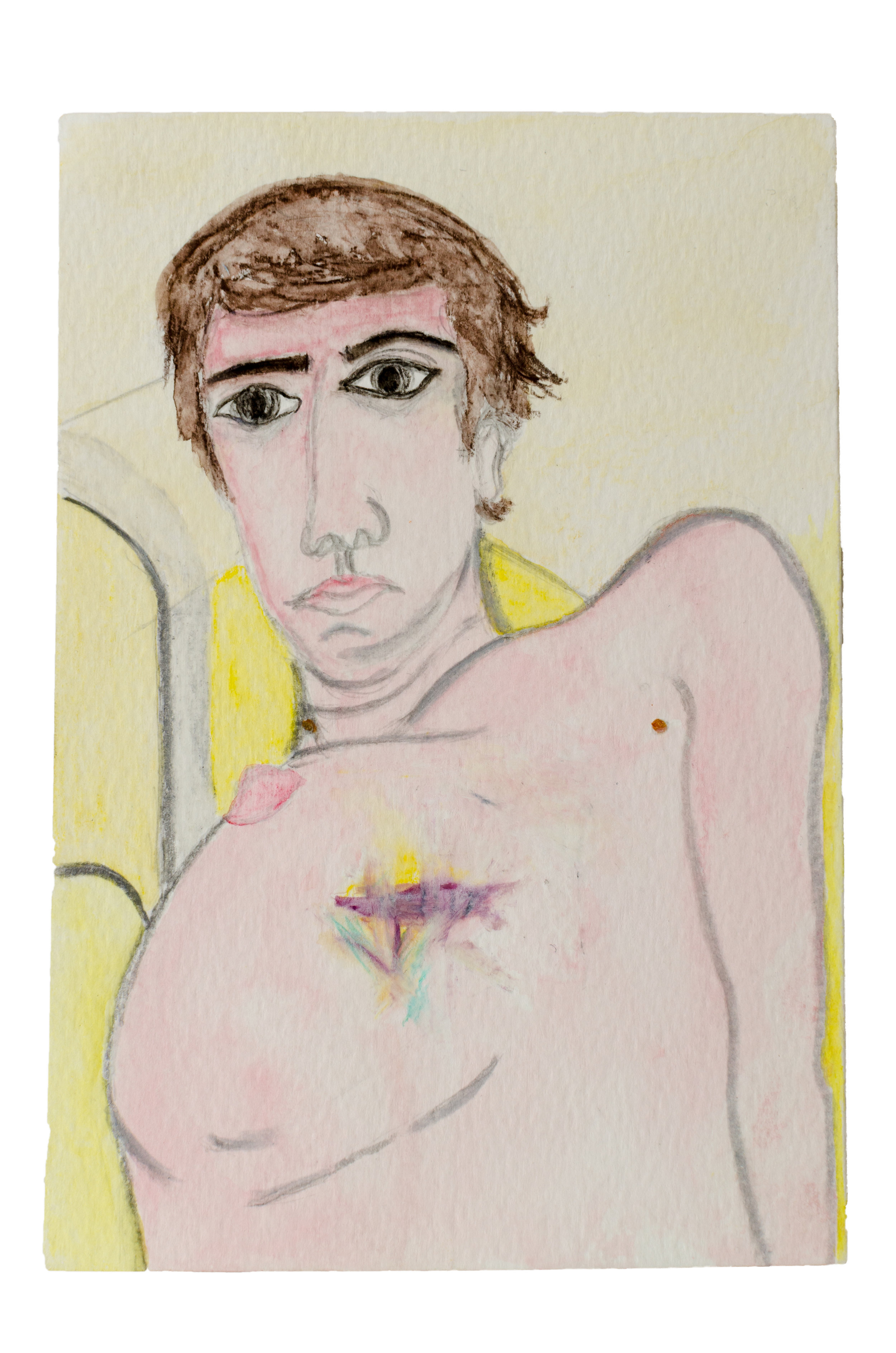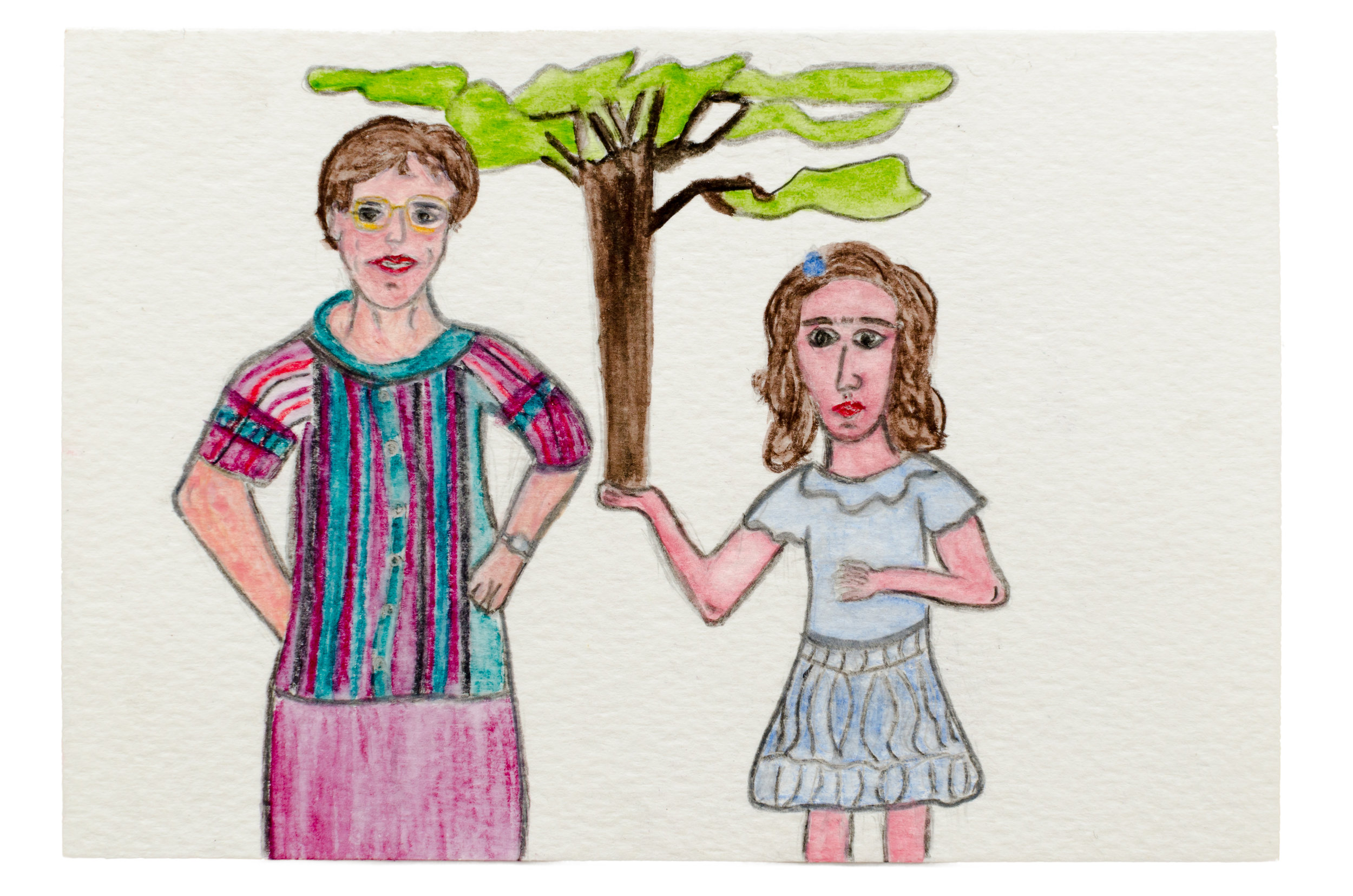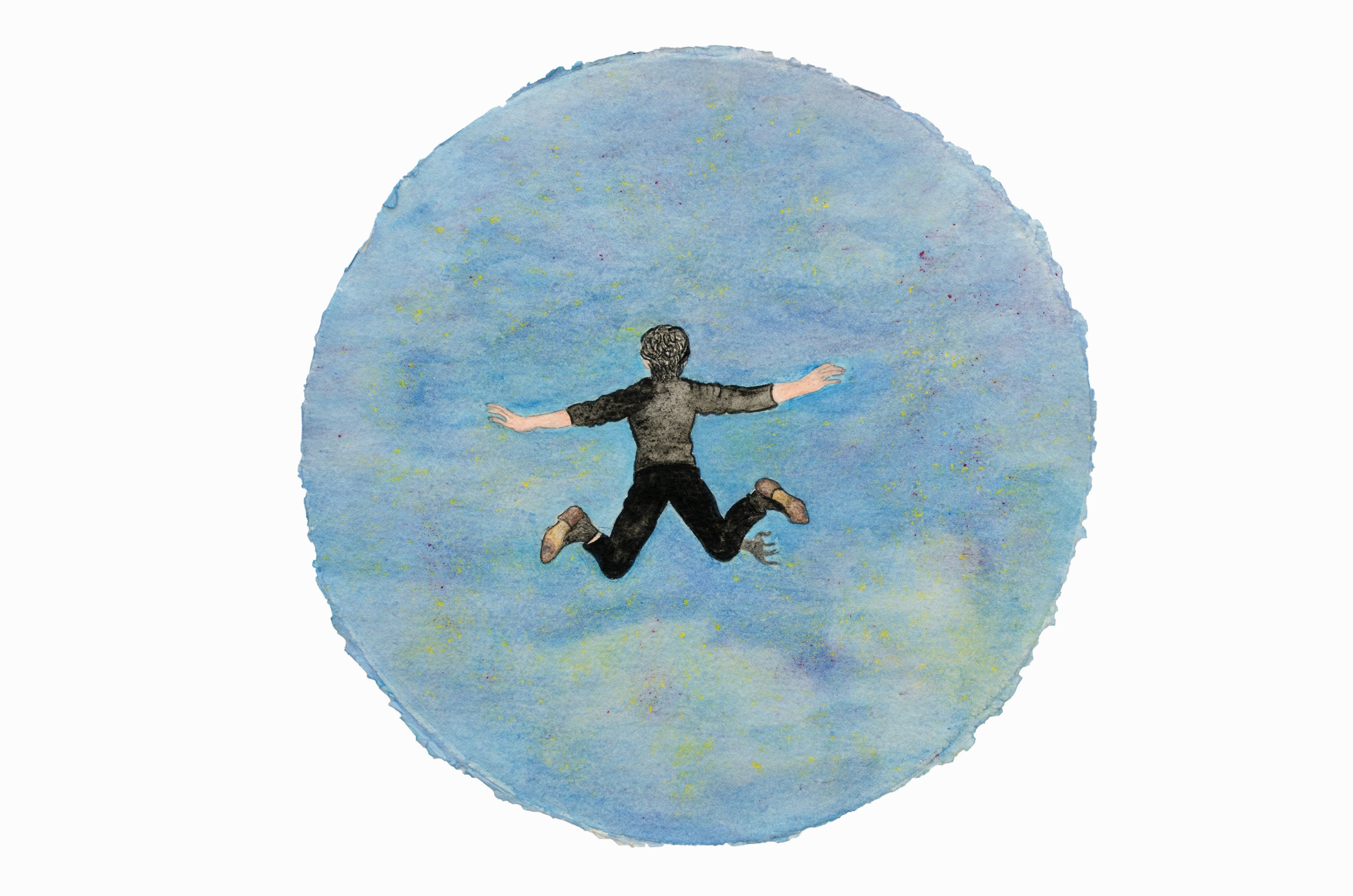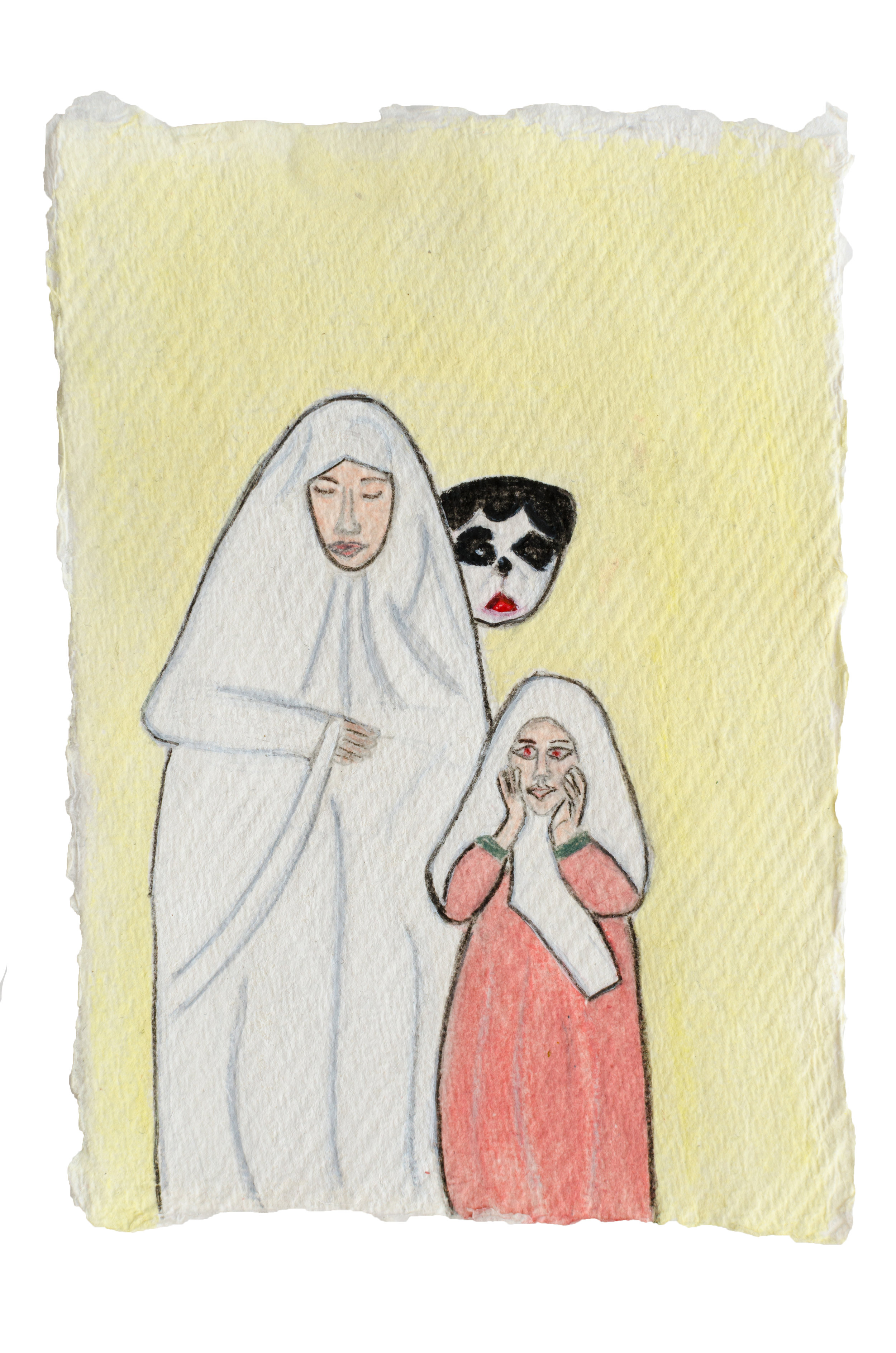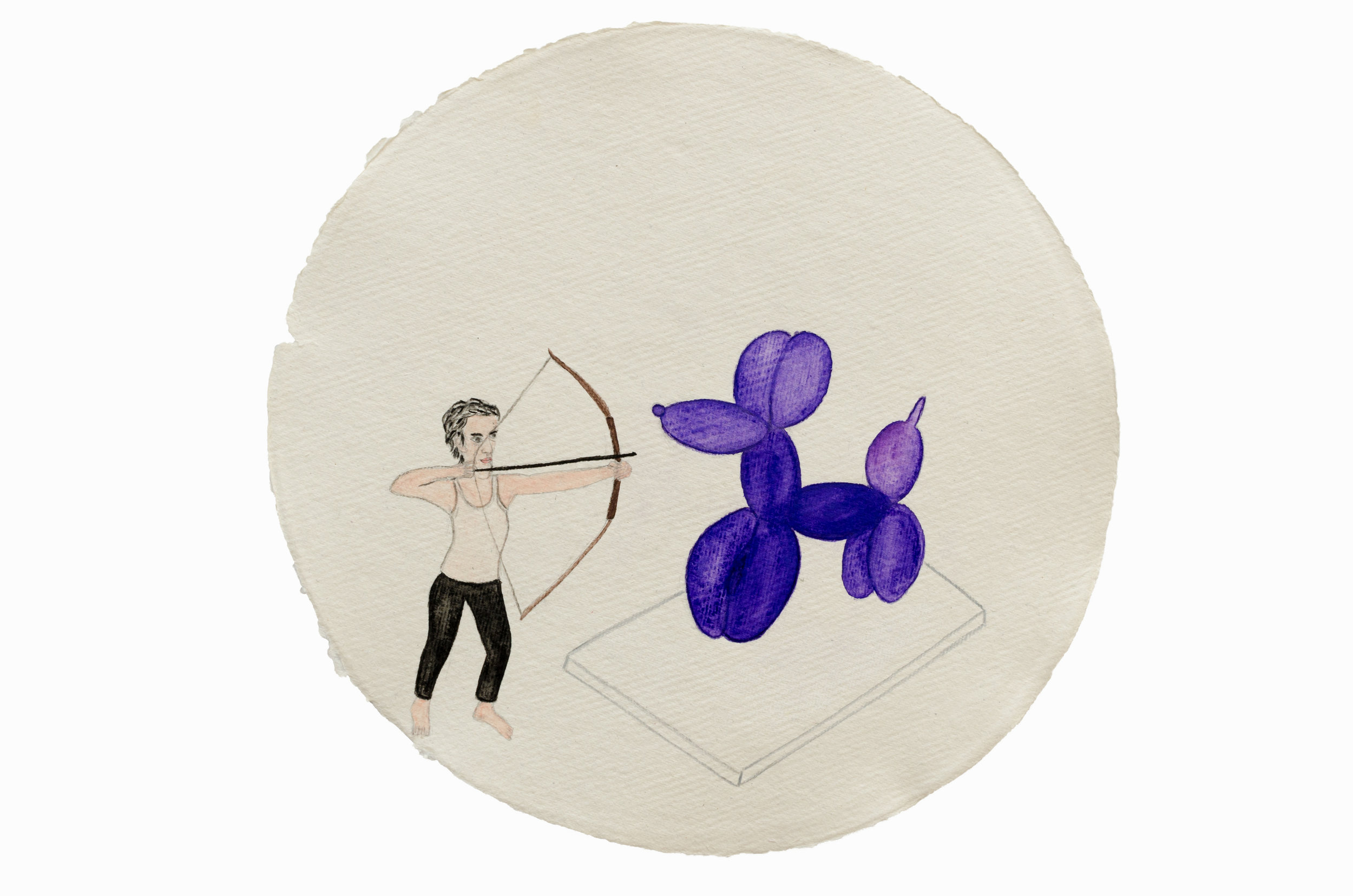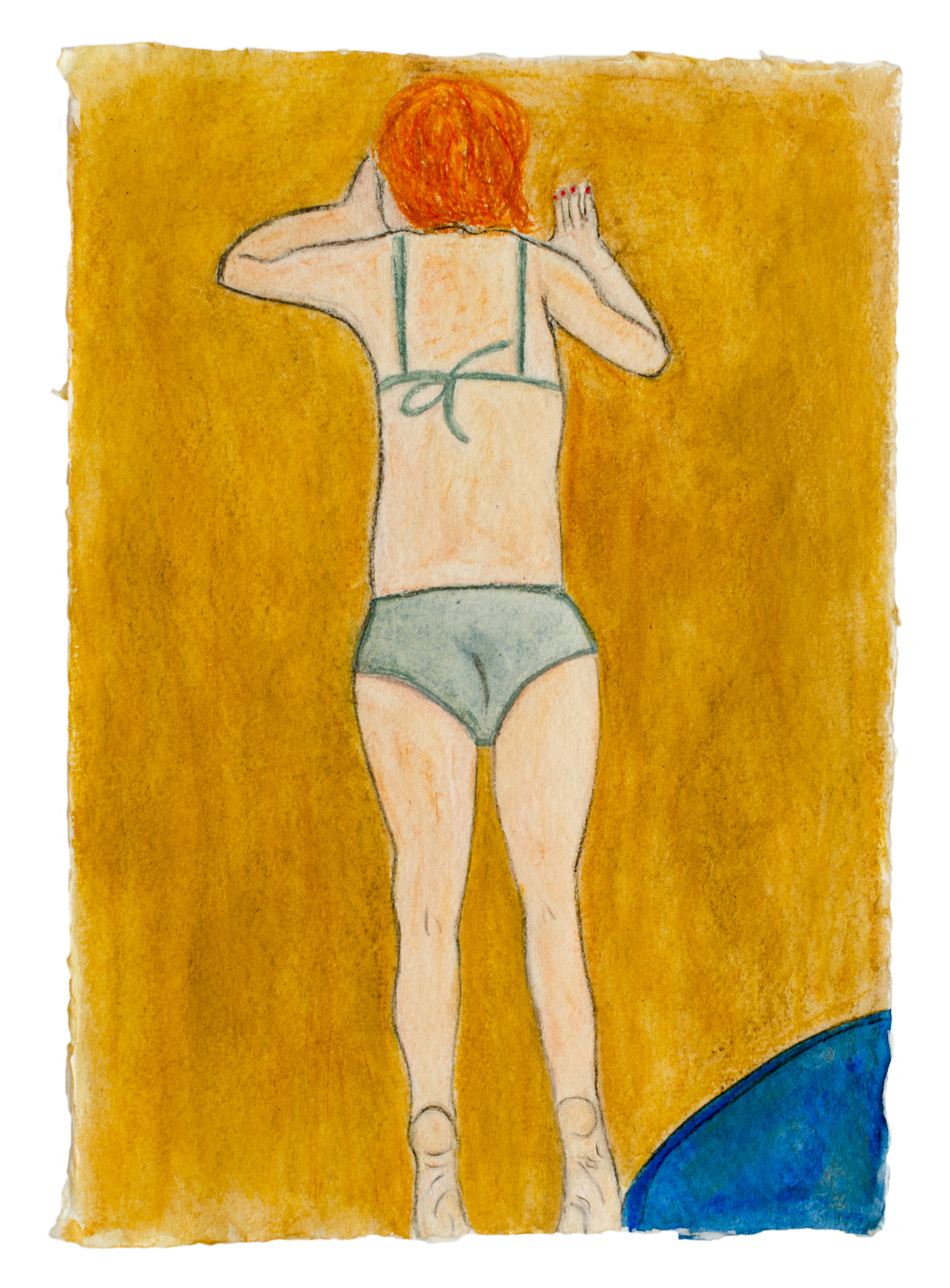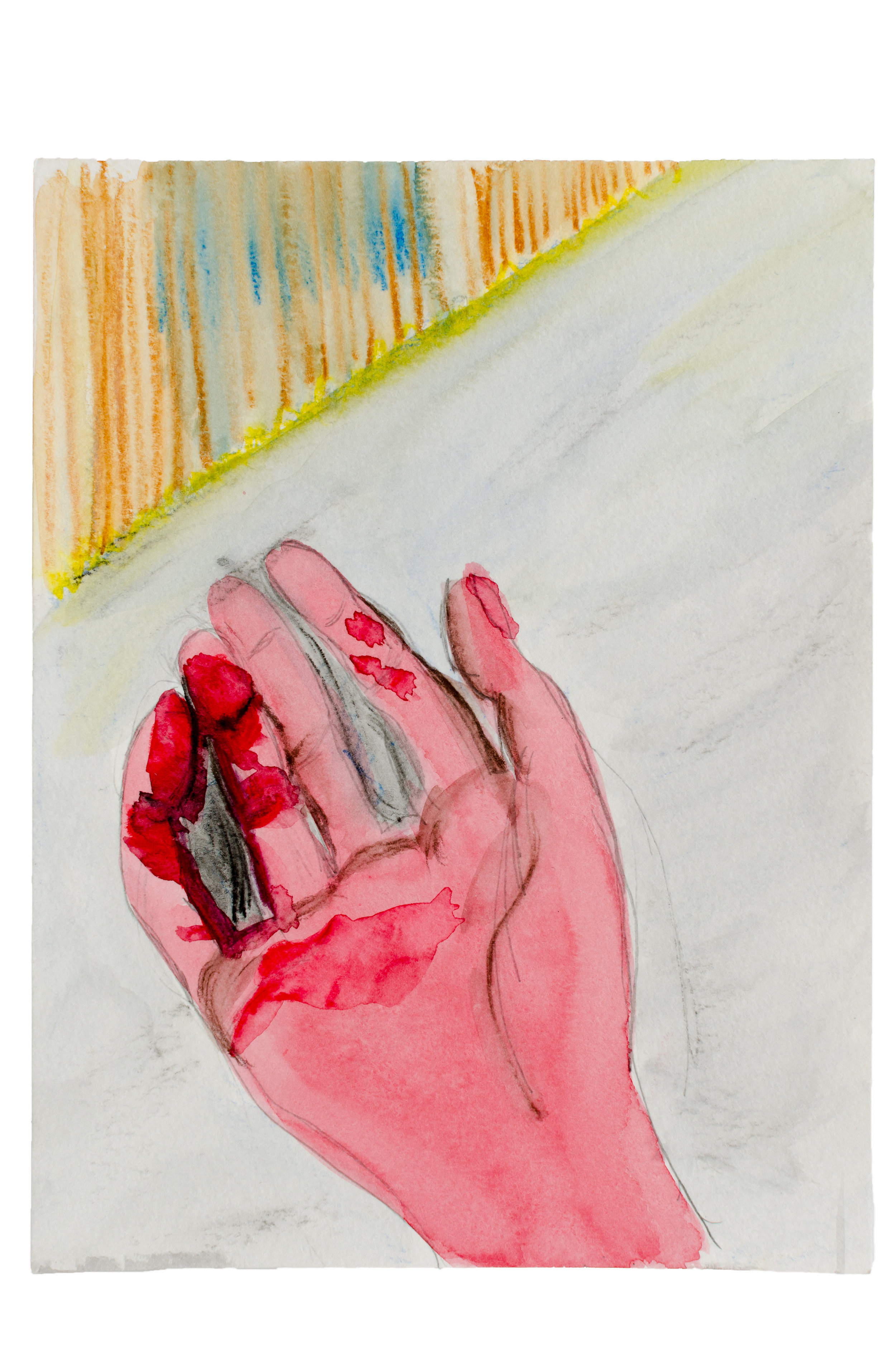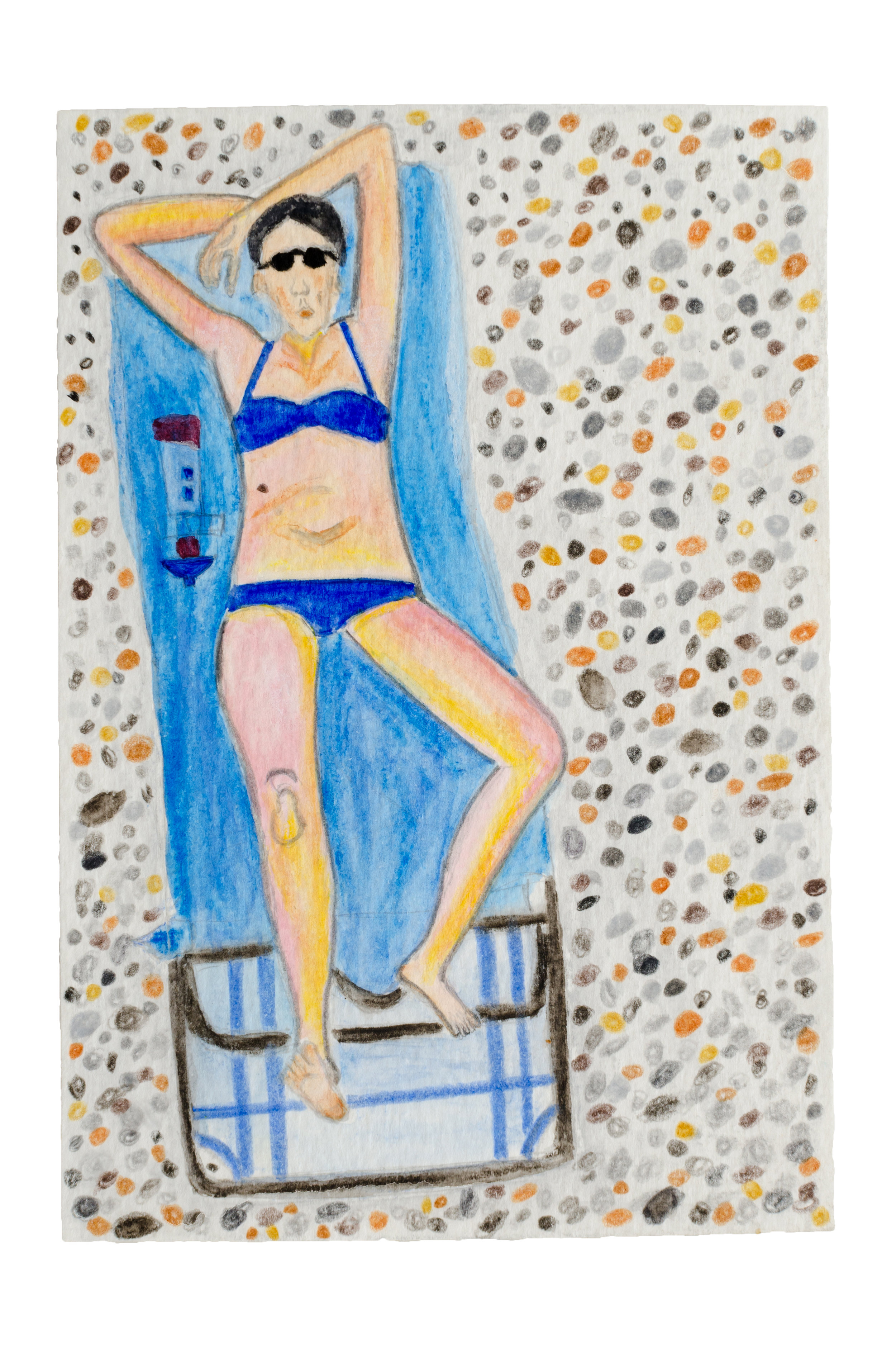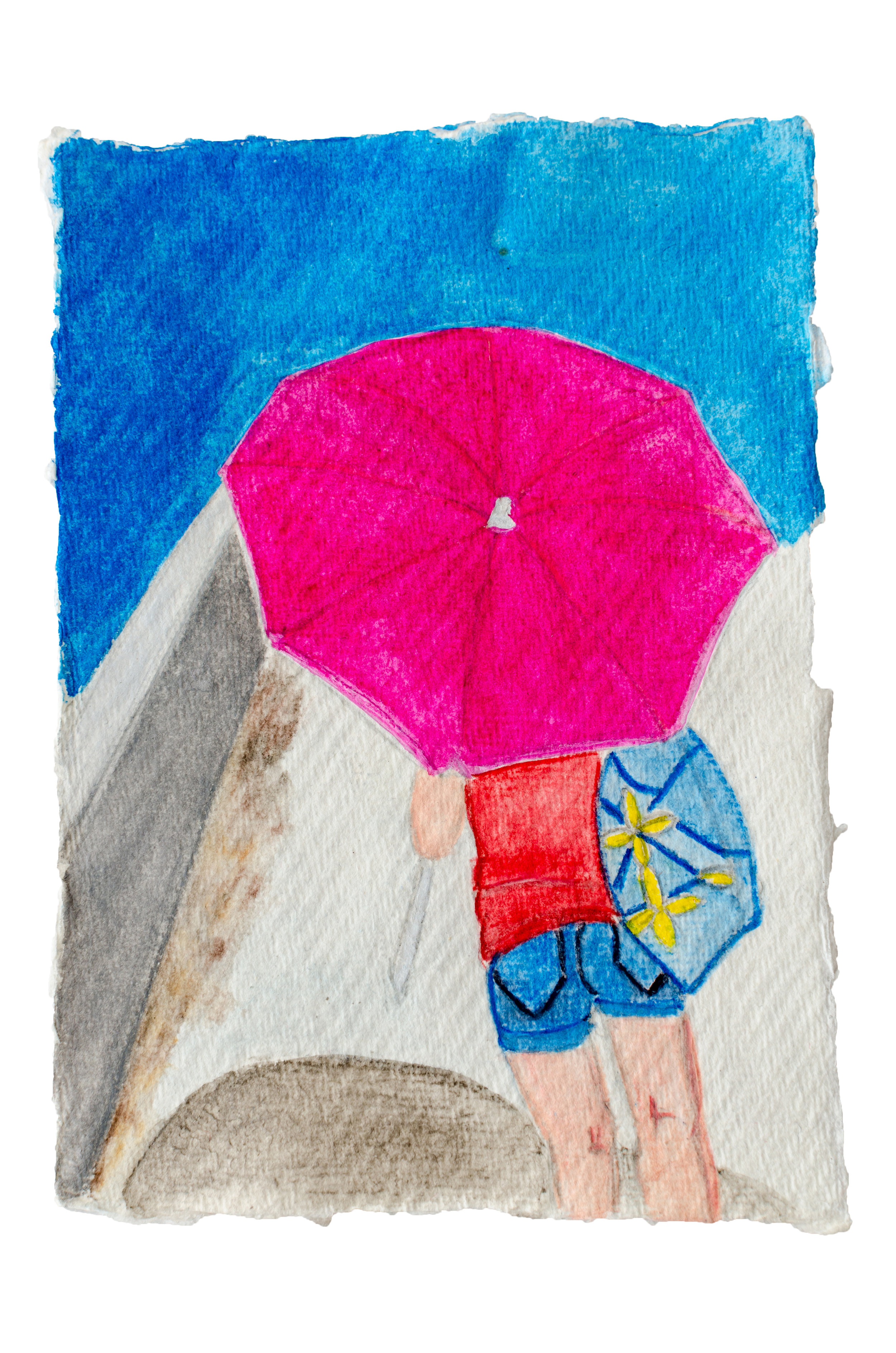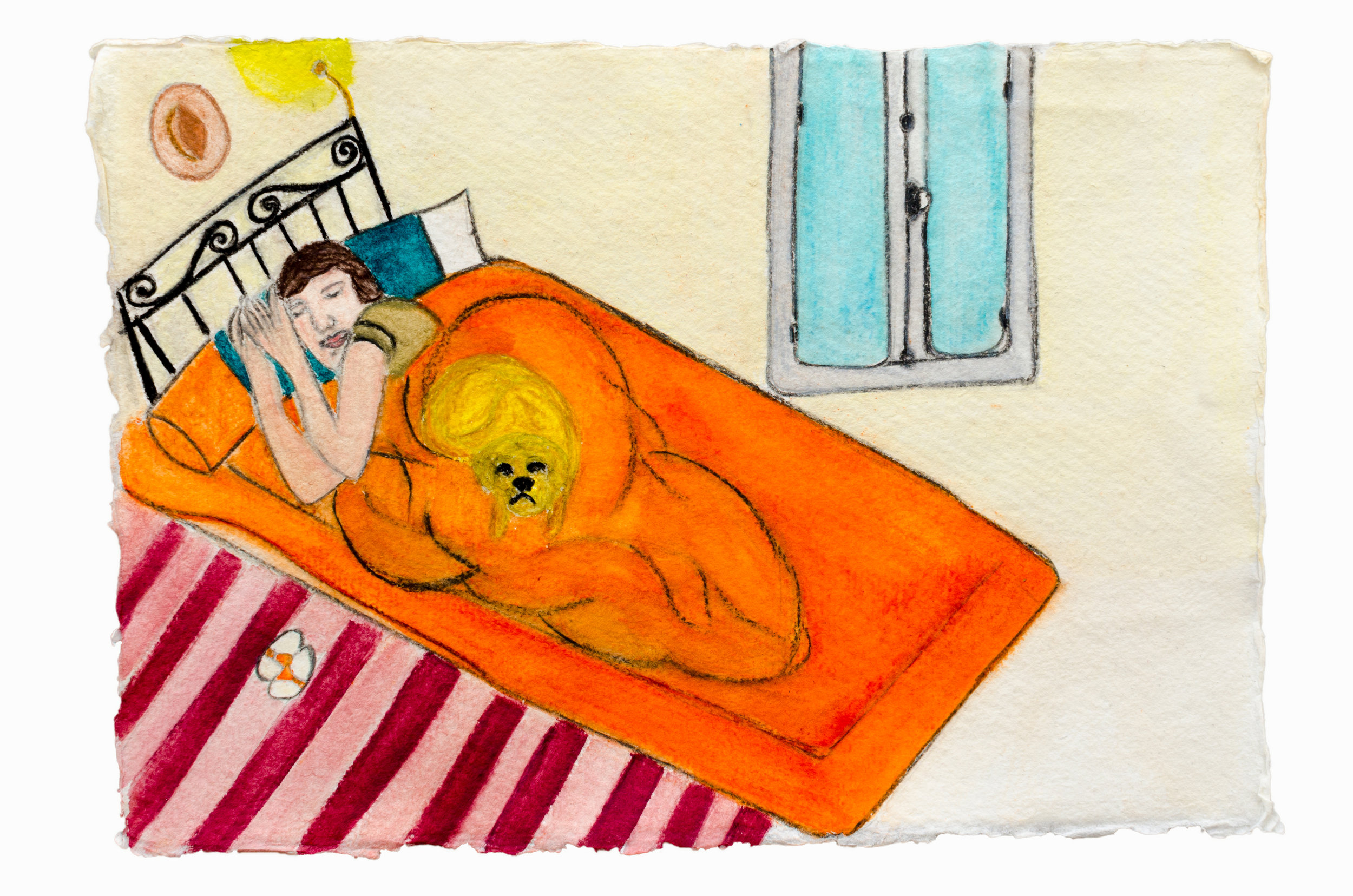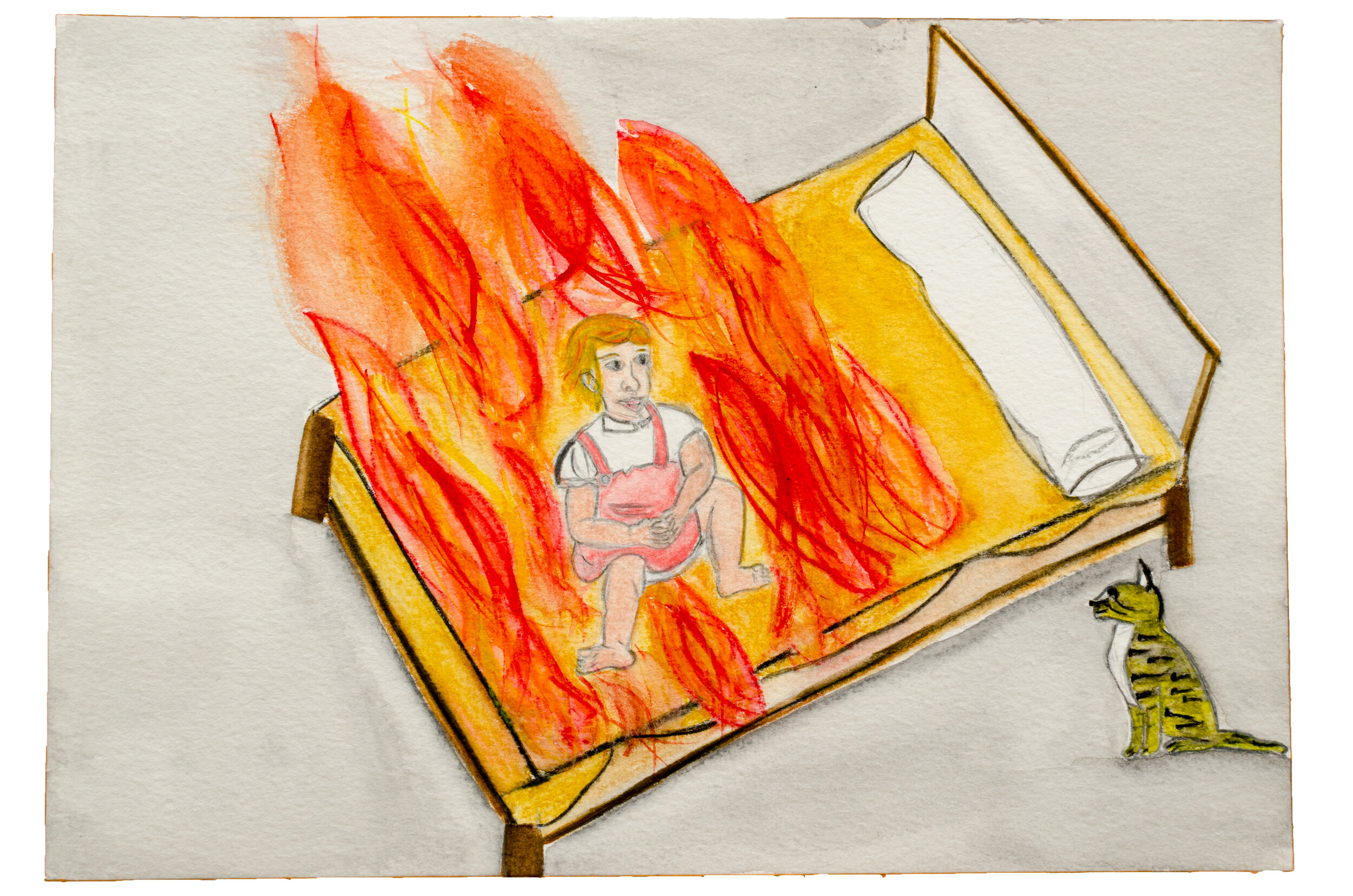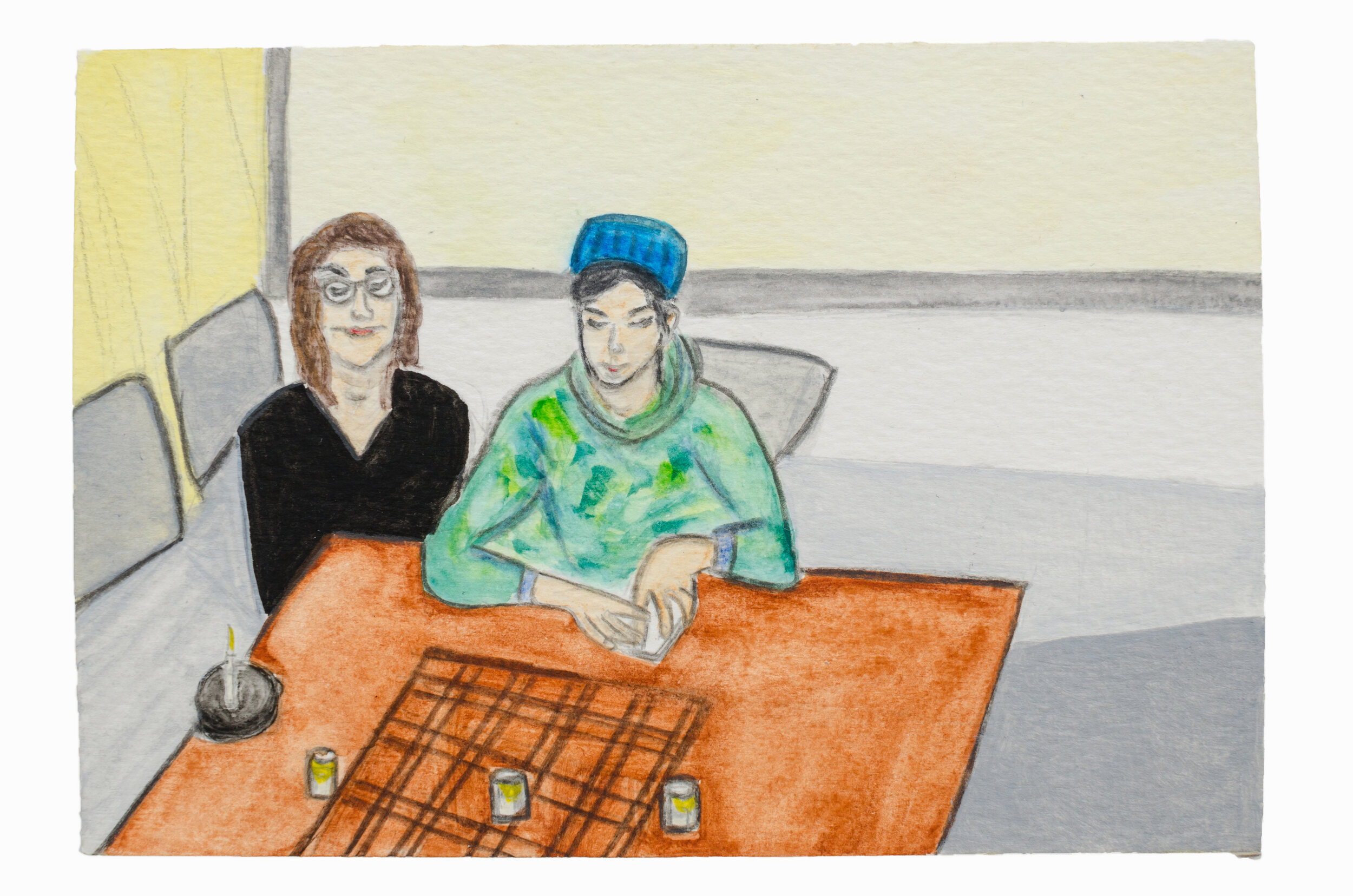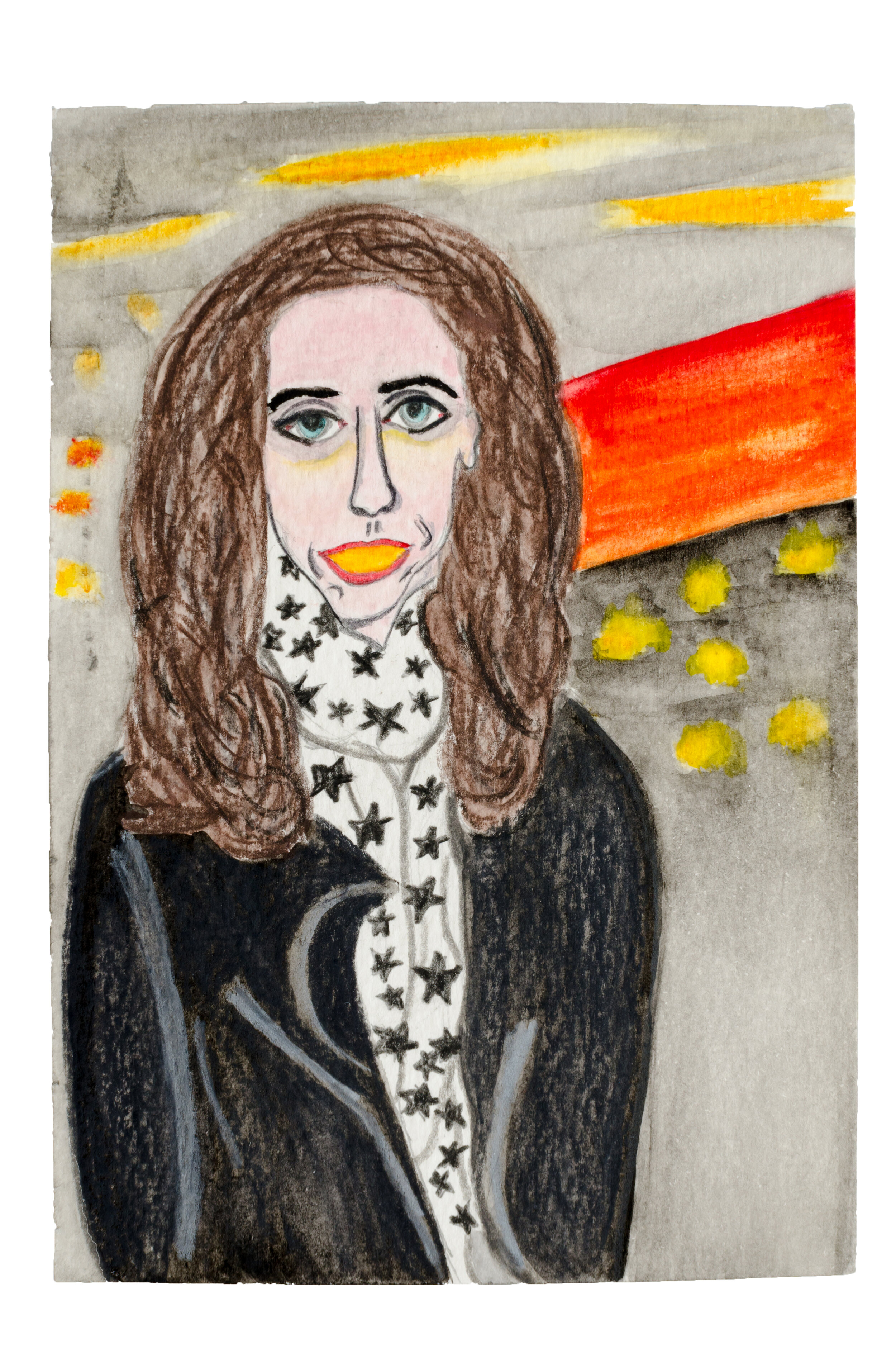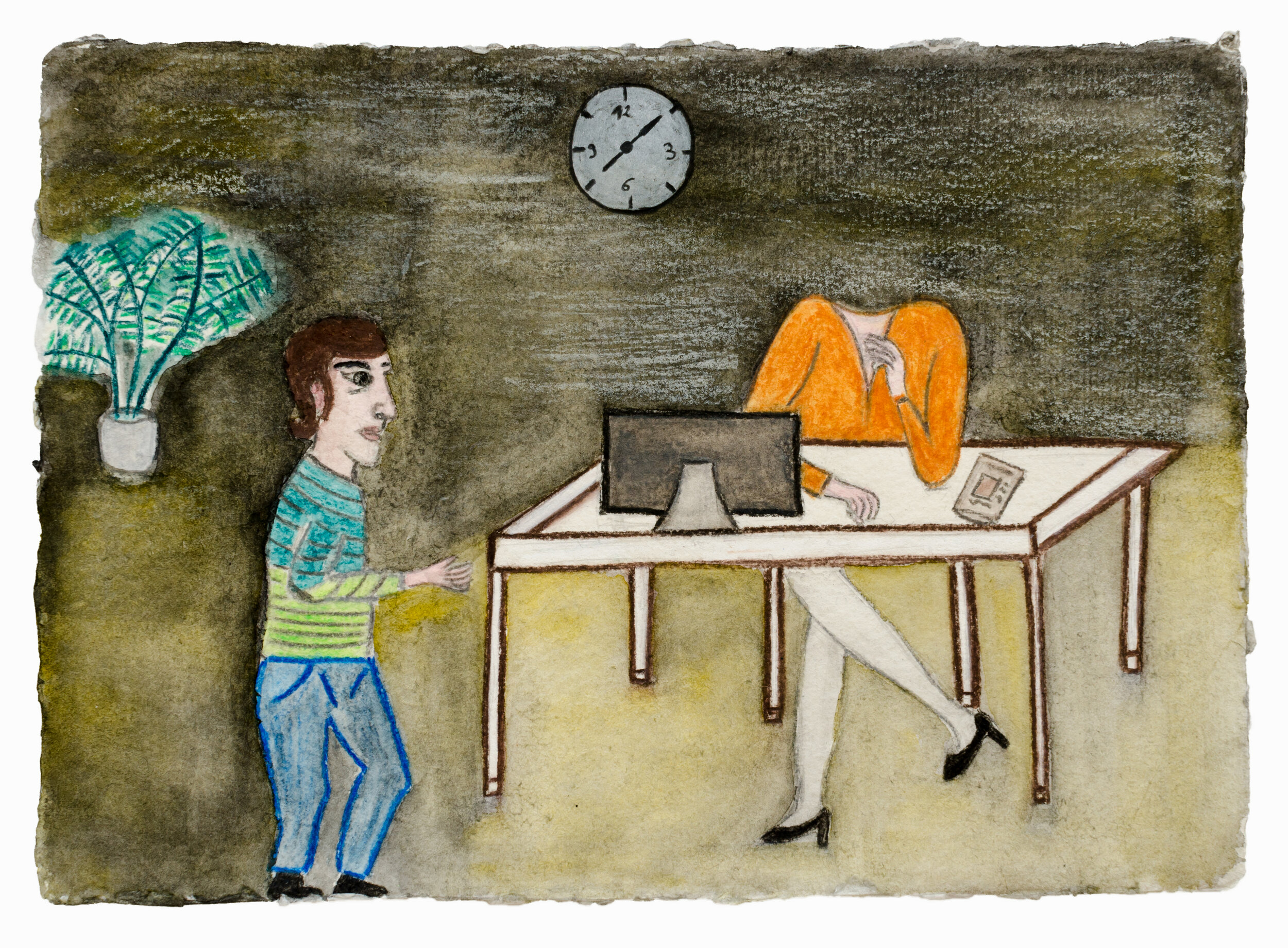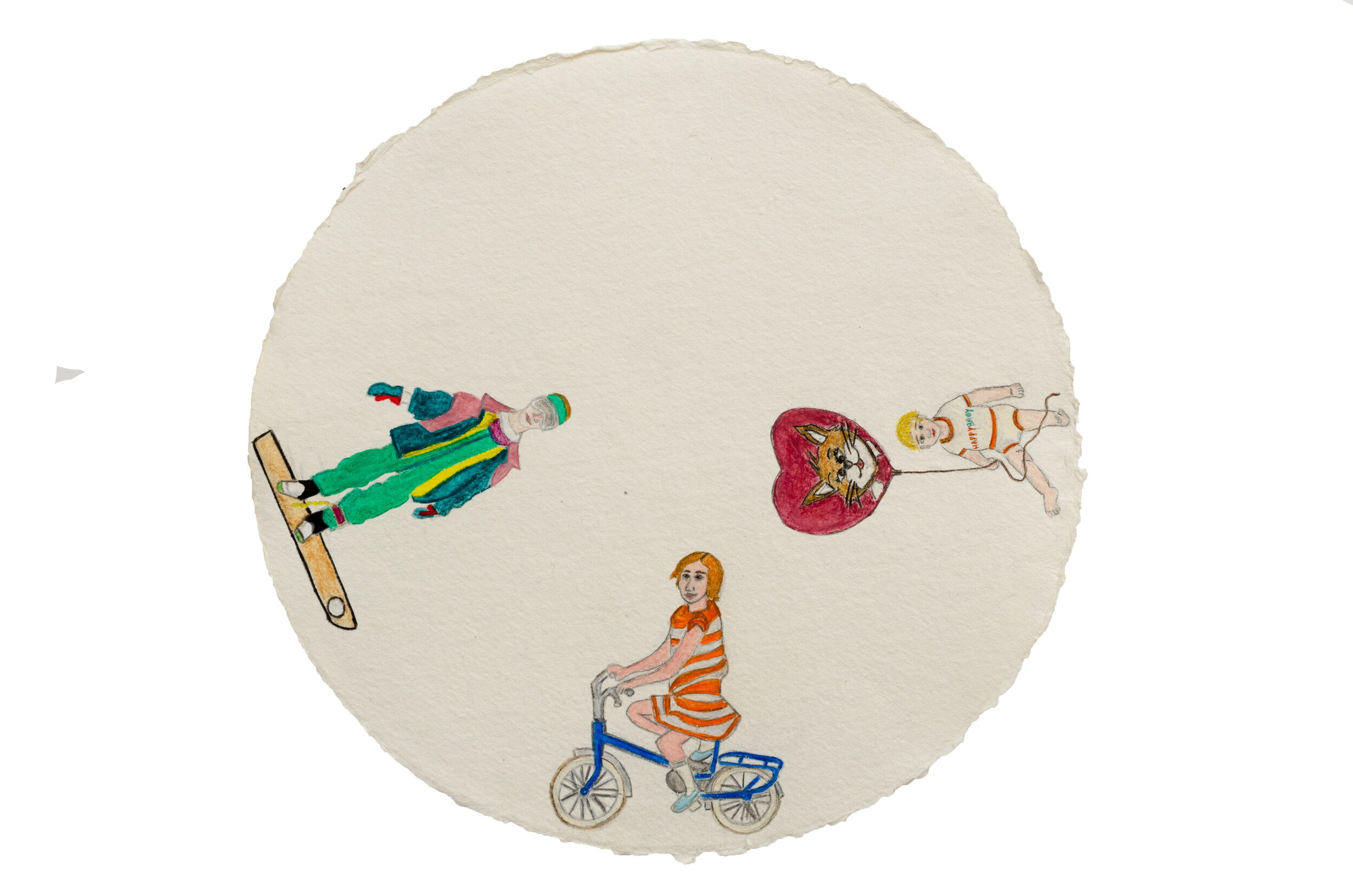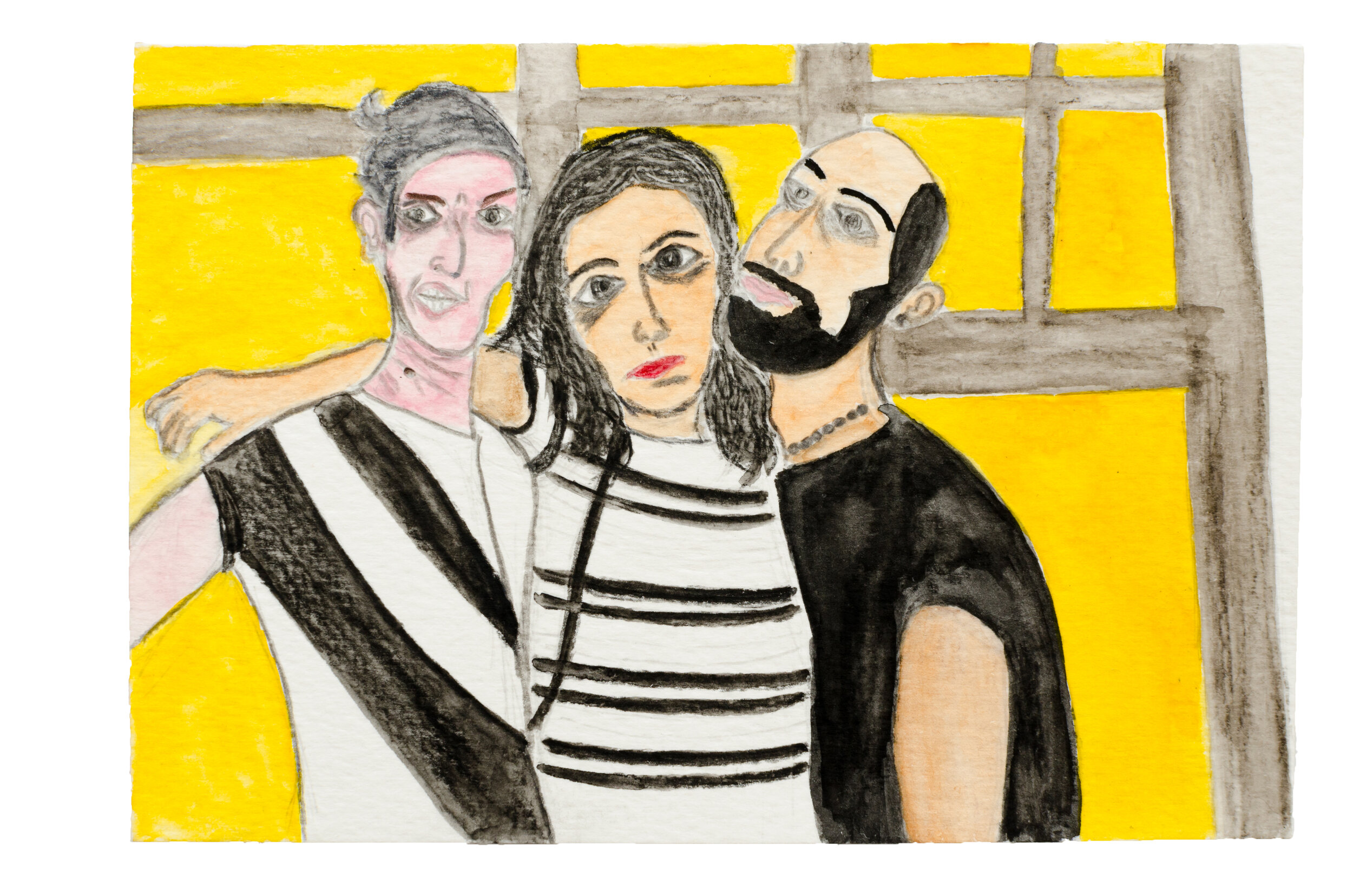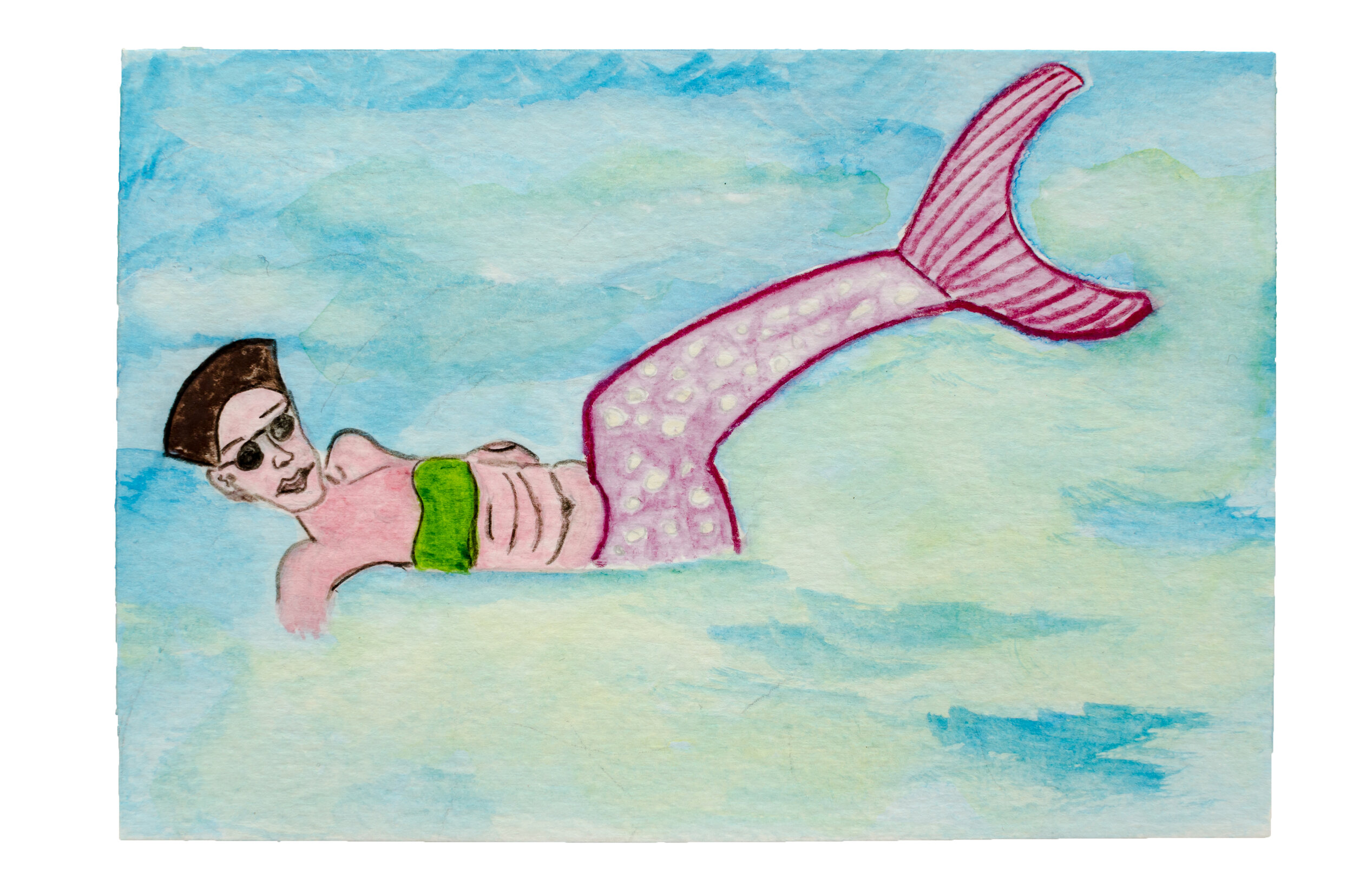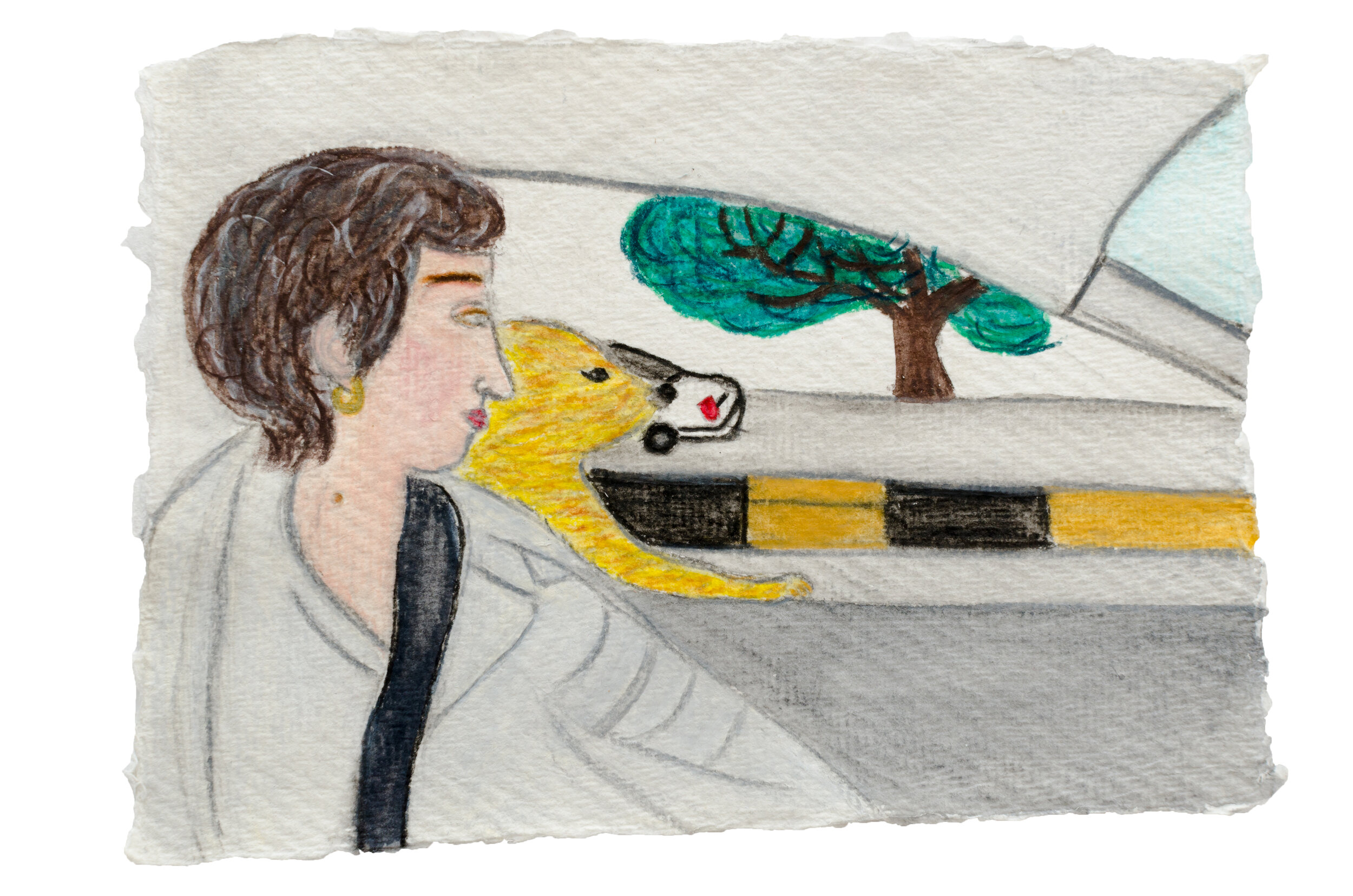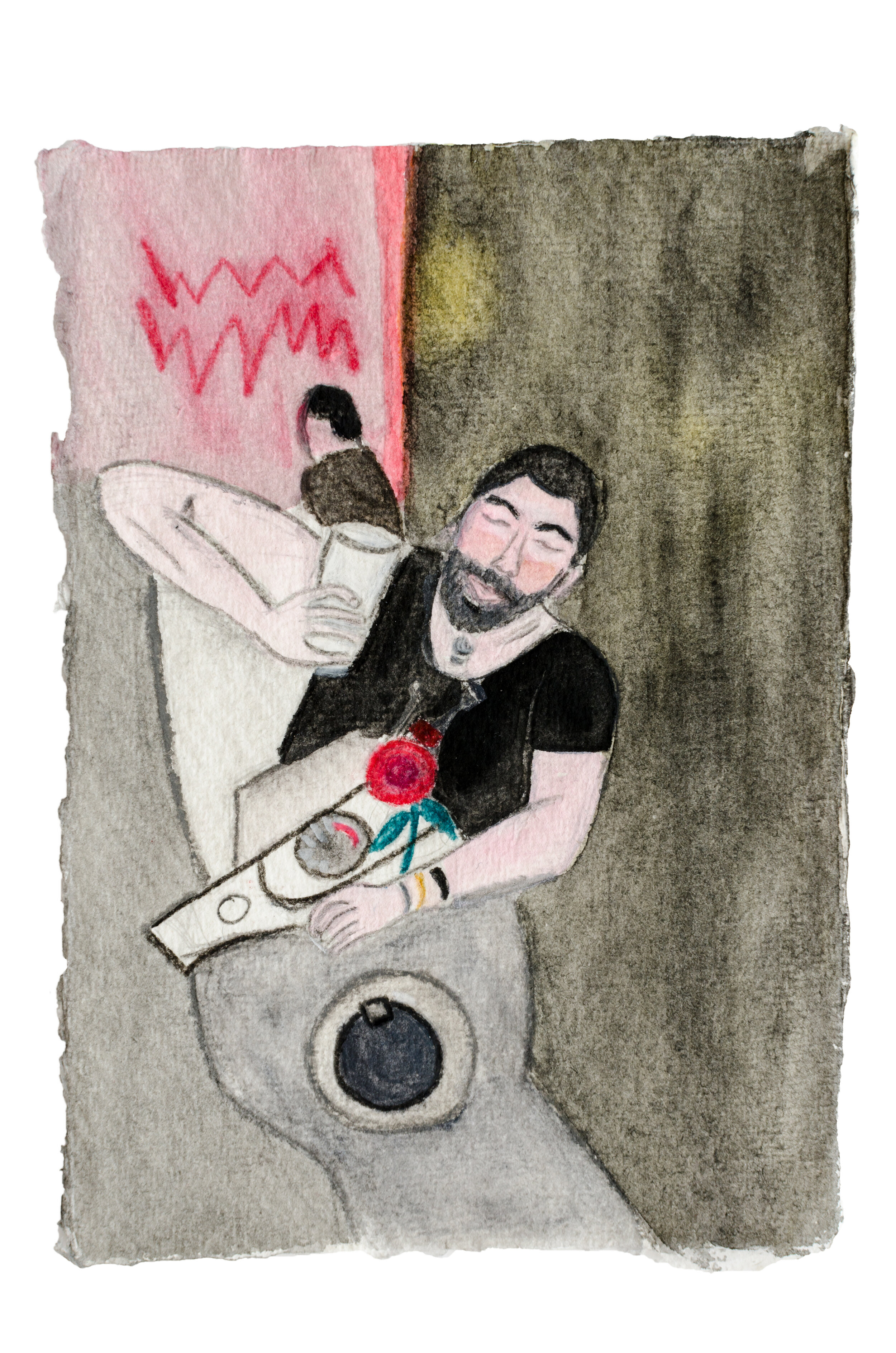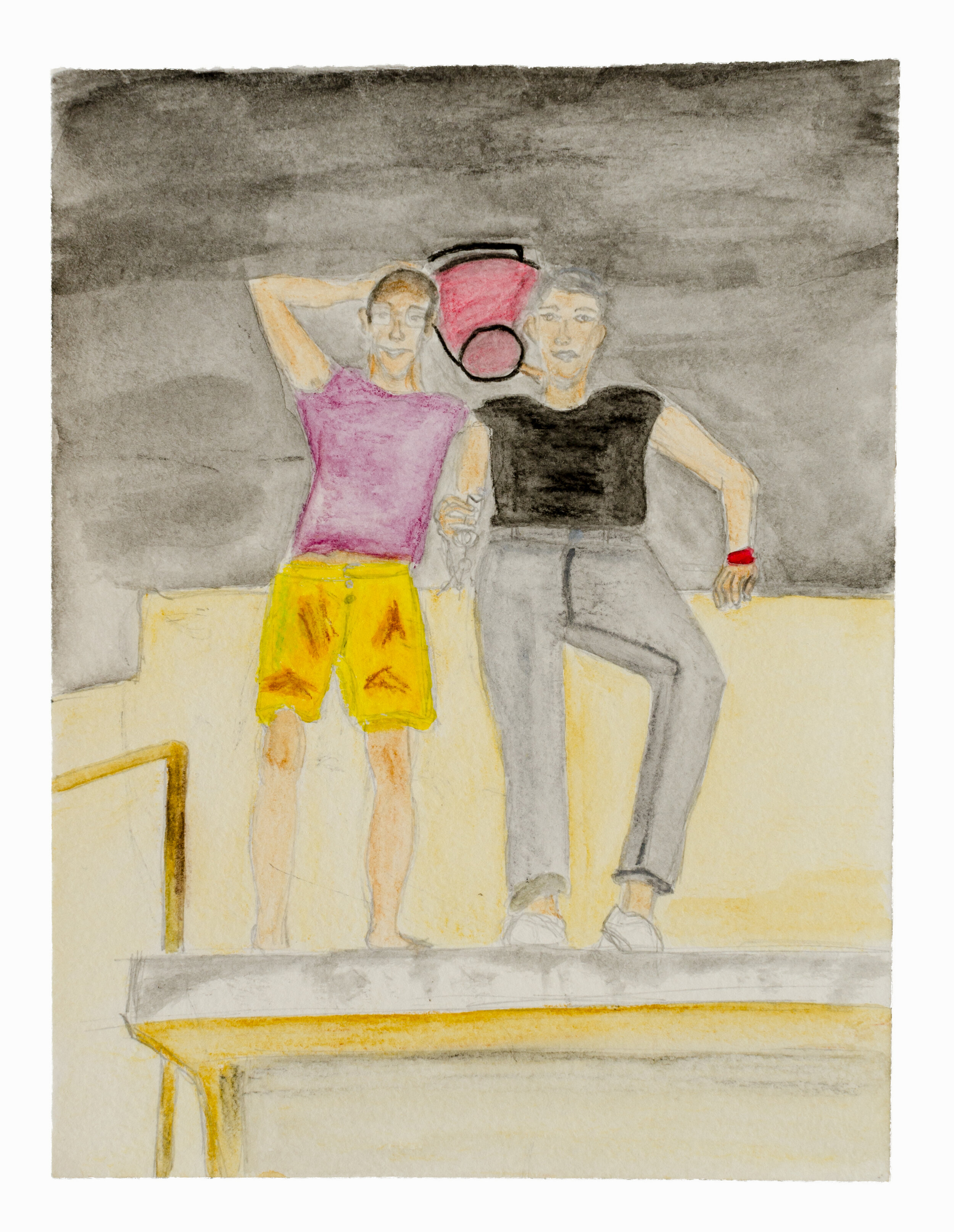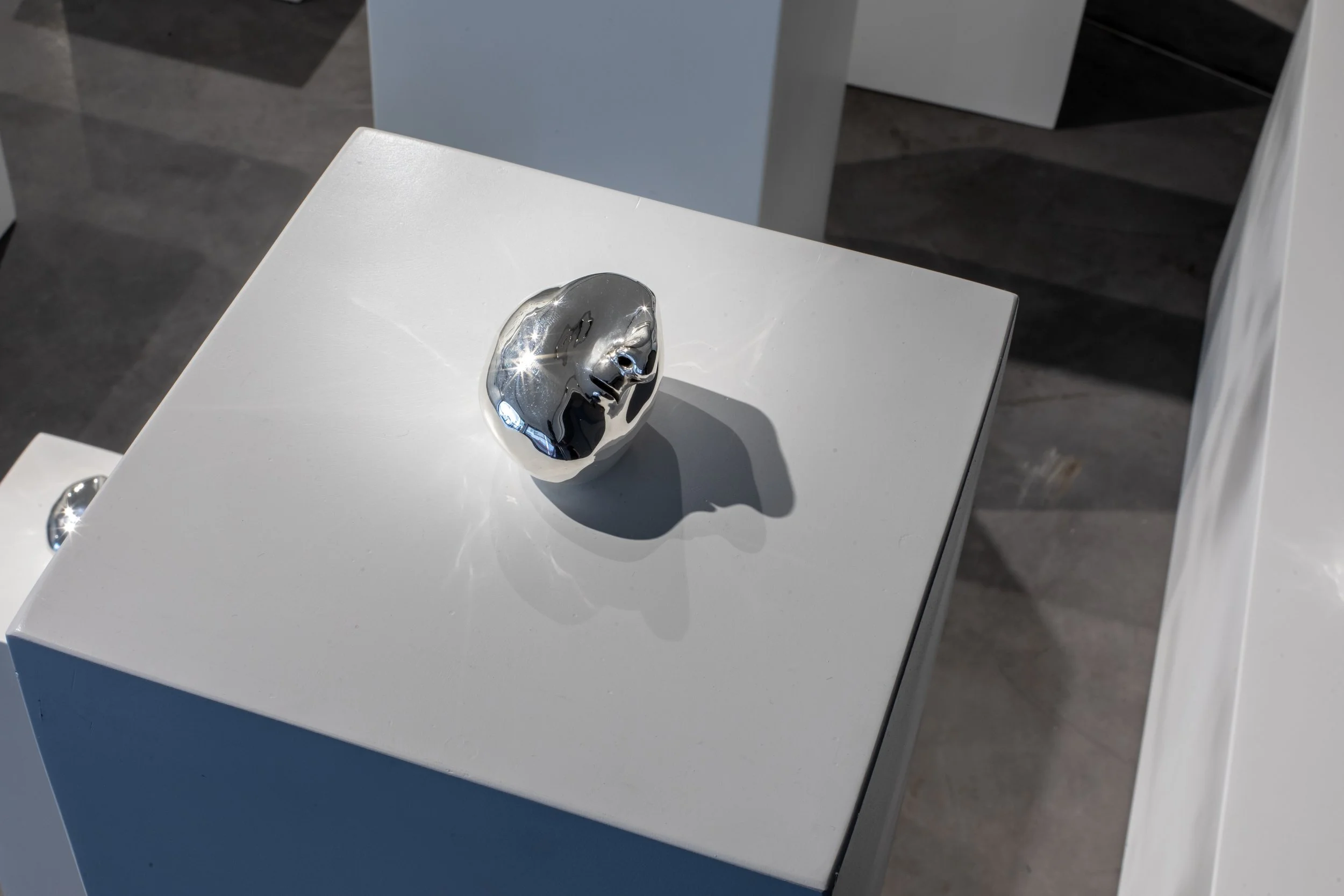In The Middle of A Leap Into The Void, Letitia Gallery, Beirut, Lebanon, 2019.
Through a series of drawings, a medium the artist is exploring for the first time, Fattouh creates childlike, colorful illustrations that depict snapshots of her vivid night dreams. These curious scenes evoke associations with artists who were at the forefront of the conceptual art movement, such as Duchamp and Manzoni, to whom she pays humorous homage. “Drawing helped me get over much of my anxiety about the city of Beirut and the recurrent movements of migration with my family during the civil war,” says the artist. The interpretation of dreams is as old as the earliest civilizations, with traces found among the Babylonians — from the Epic of Gilgamesh to the Book of Dreams — and remains a concern for science, religion, psychology, philosophy, and art today.
Scattered across the gallery space The Sleepers are silver heads resting on socles. She meticulously crafts small head variations, each fitting in the palm of a hand. These abstracted faces recall Brancusi’s Sleeping Muse. Fattouh’s Sleepers are void of eyes and ears, yet feature a pronounced nose with open nostrils and mouth, resembling living, breathing organisms—peaceful, fragile spheres containing well-guarded secrets.
Facing them is Beirut Mutations (2015), a photomontage assembled from film photographs the artist took around various locations in Lebanon over time. The massive, phantasmagorical black-and-white image reveals a chaotic cityscape, advancing and collapsing upon itself, consuming both the space and its inhabitants.
A cobalt blue light reverberates from a neon installation bearing the words Affect/Infect, while the sound of a single drum fills the room with an airy presence, creating an intangible tension that hovers. The viewer is encouraged to surrender to inner intuition, exploring notions of conciliation versus resistance to introspection. The drumming draws us toward the final space, behind the landscape, where Another Night in Beirut, a 20 minute video, plays. This iteration of her earlier work A Night in Beirut (2006) revisits a personal memory: the artist once filmed a man in a white robe (el tabbal) walking alone at night—the first time she had seen him after years of hearing his drum interrupt her childhood sleep, always without glimpsing his face. In the new version, the drummer’s son now rides in a car rather than walking, acting as a reminder of time’s passage and as a mediator between real and fictional spaces we constantly navigate within the constructed objects of our imagination.
Throughout this multidisciplinary exhibition, Sirine Fattouh invites us into her own intimate world—and ours—of muses, memory, gender, social constructs, and self-discovery, urging us to find ourselves on the other side of a leap into the void.


